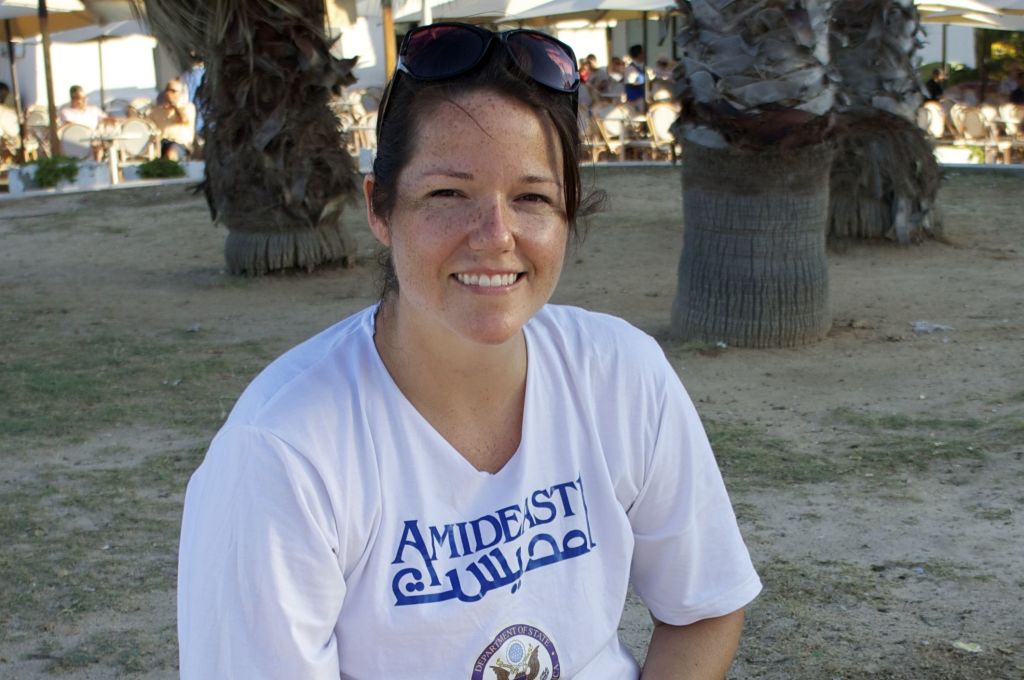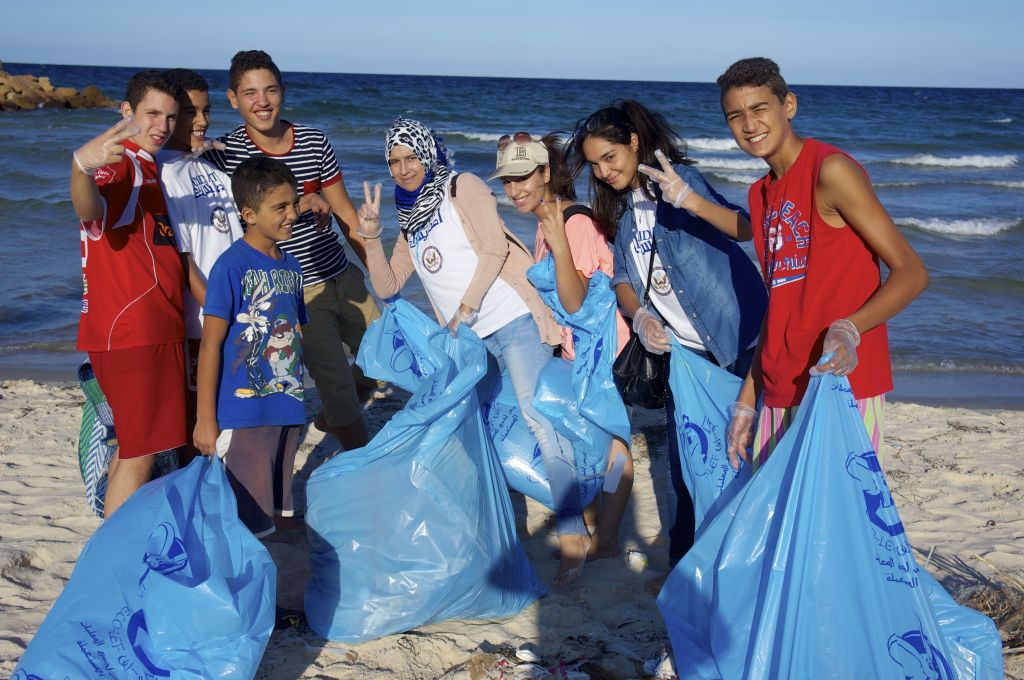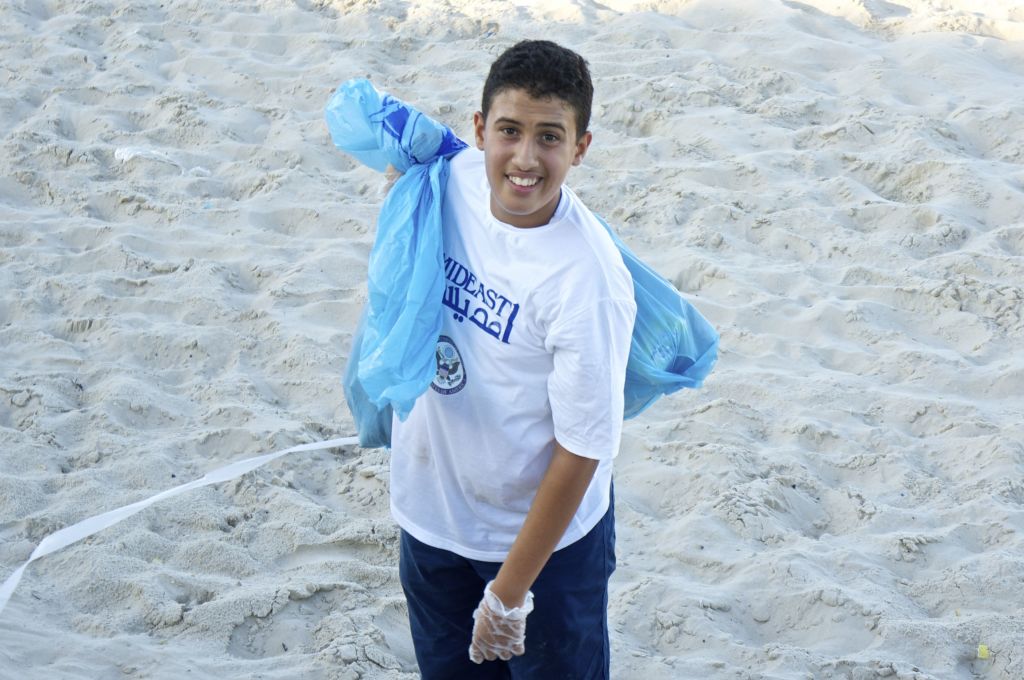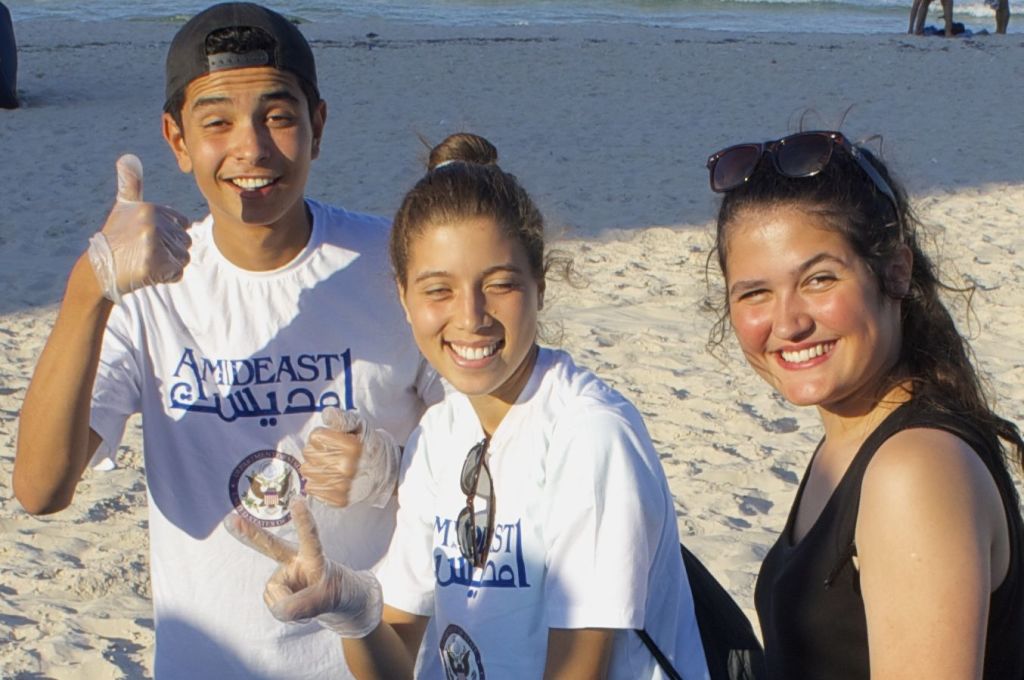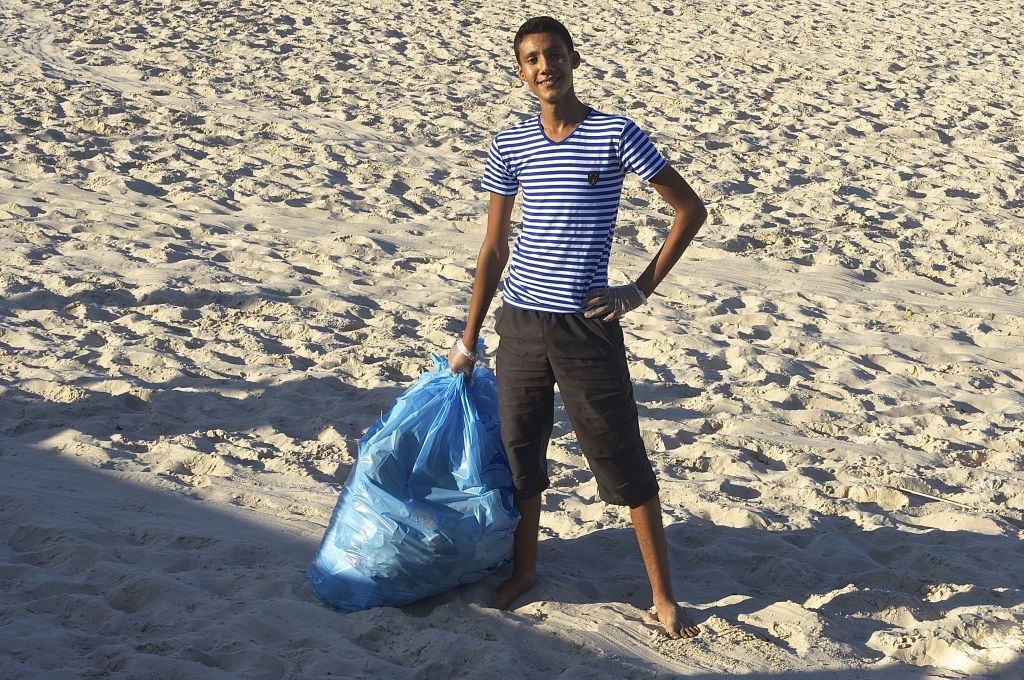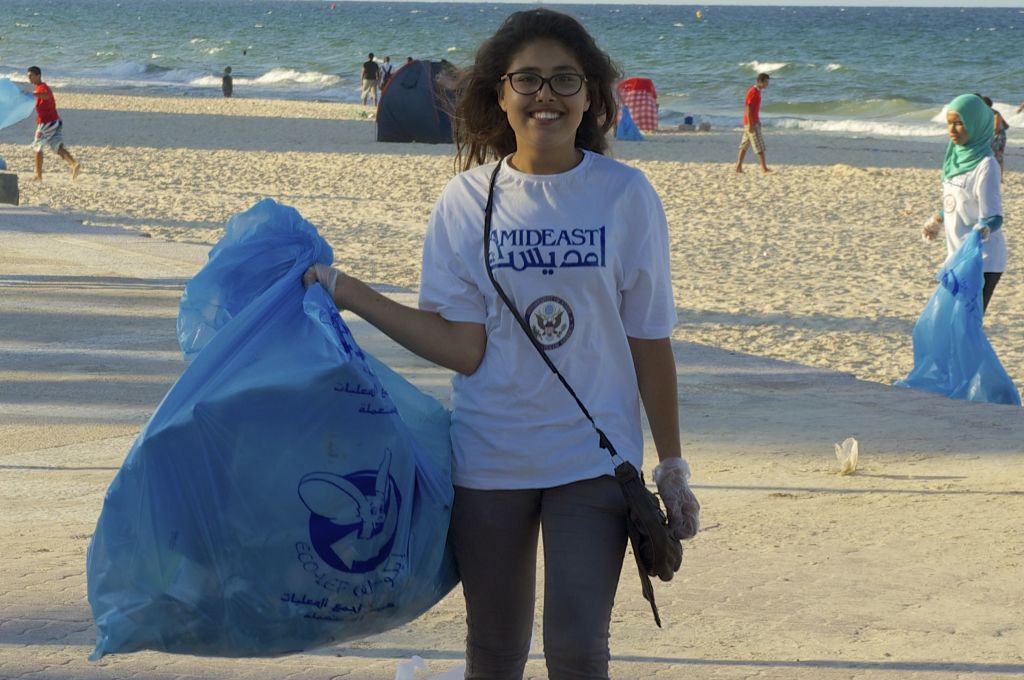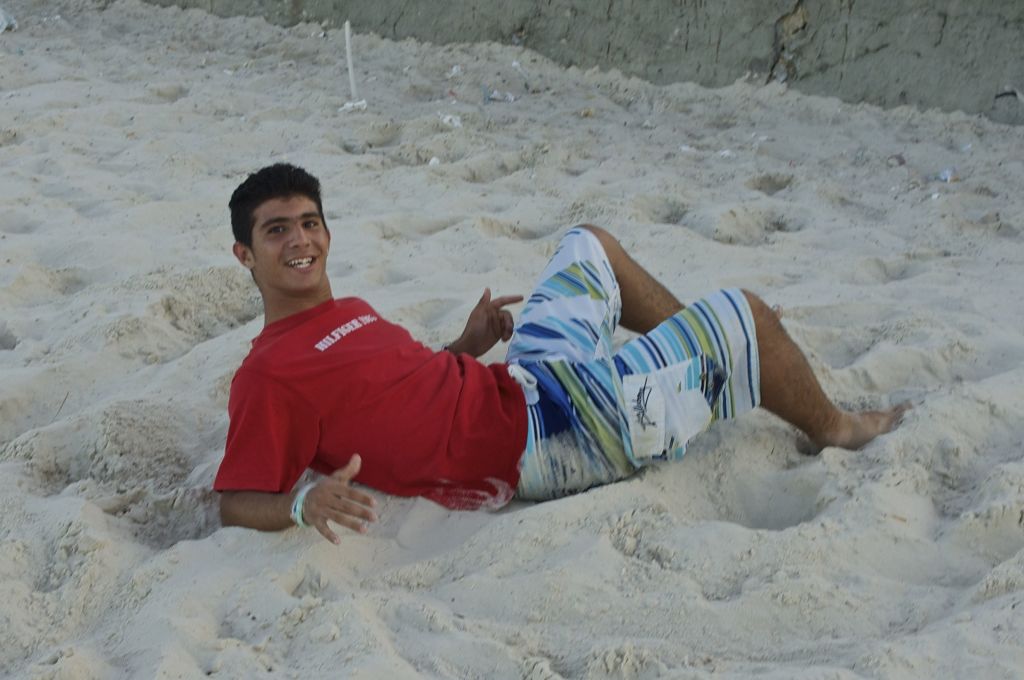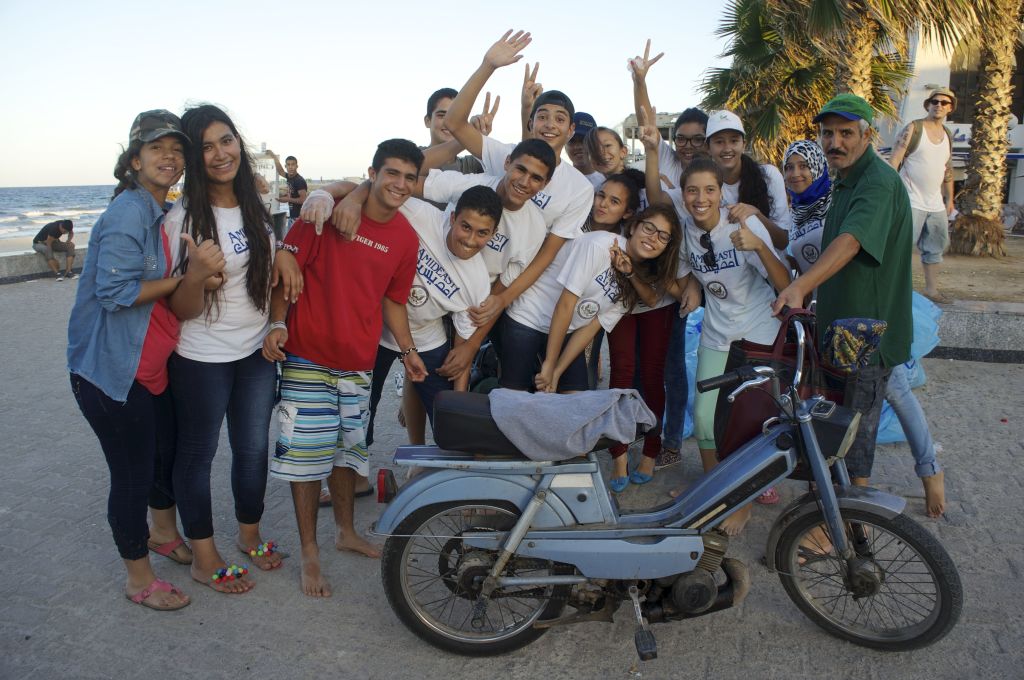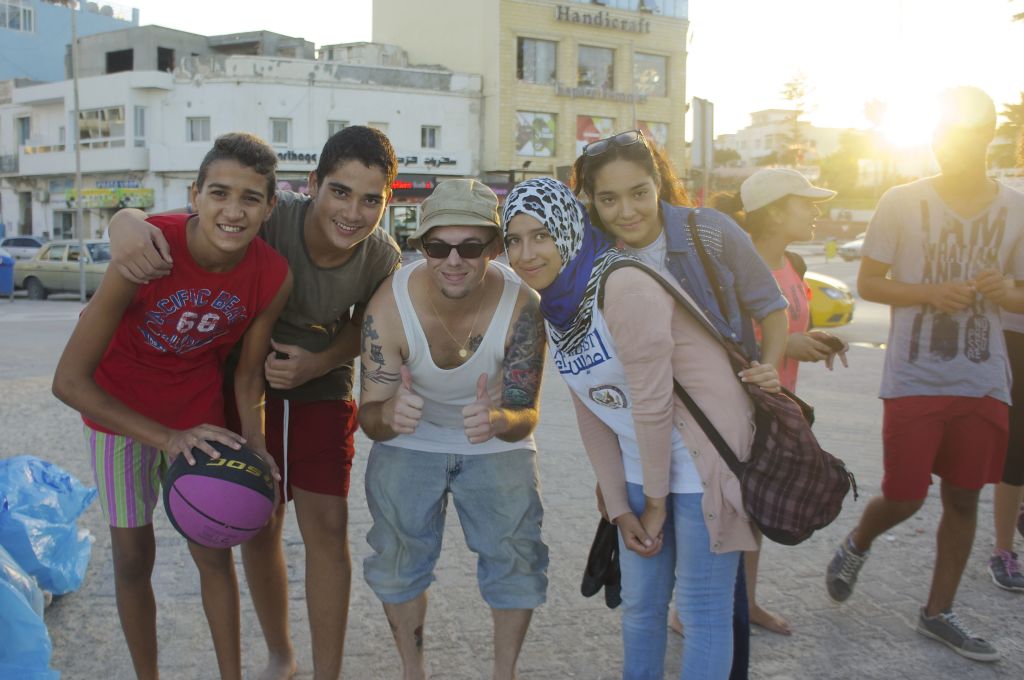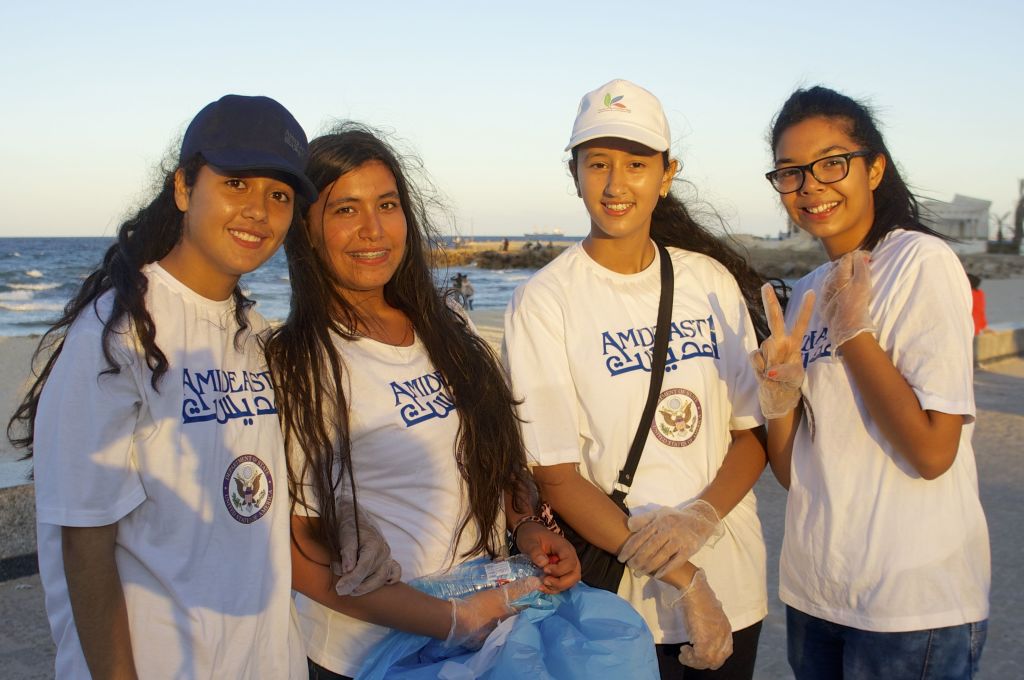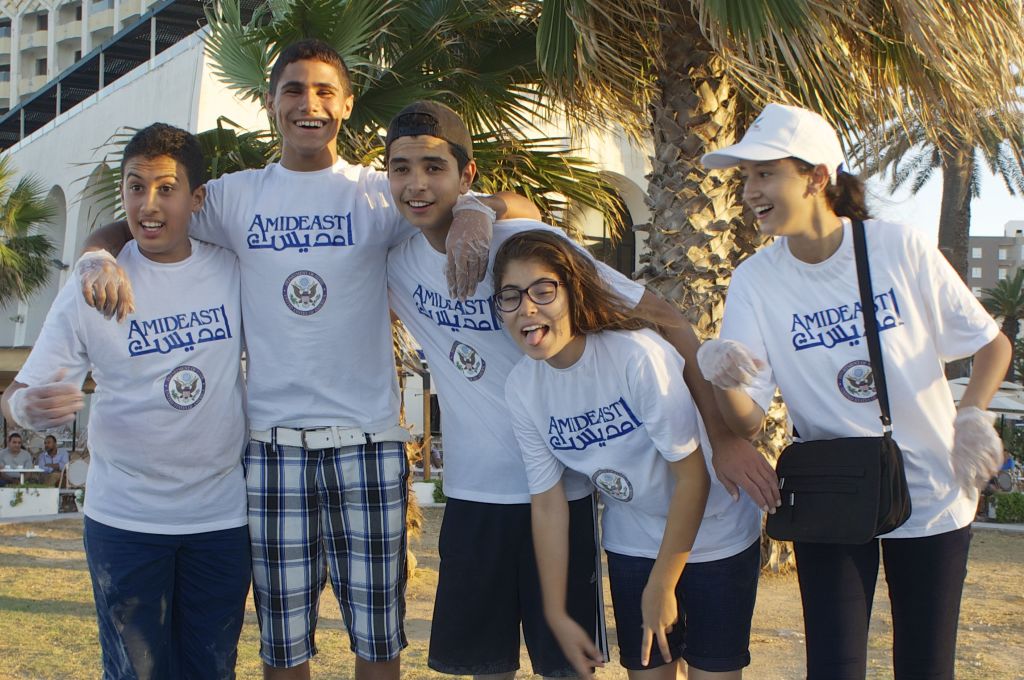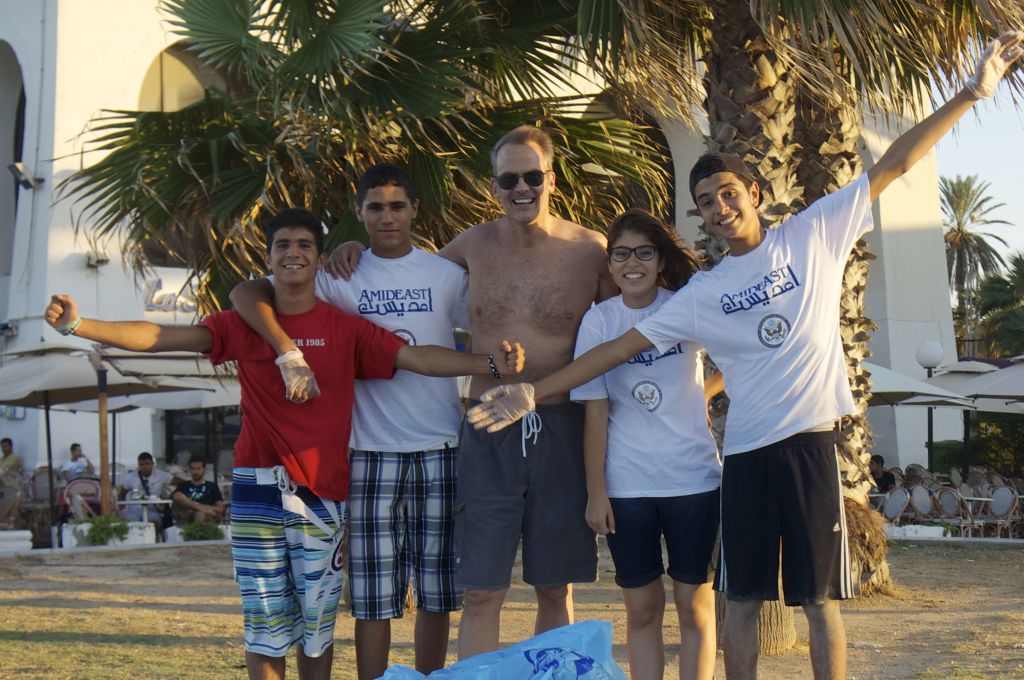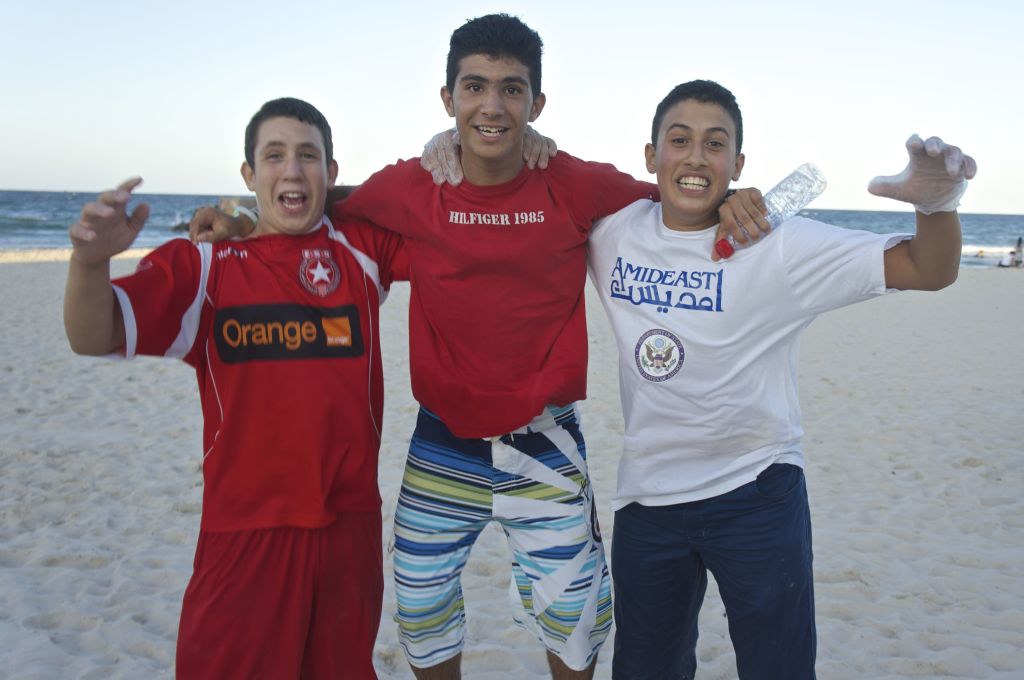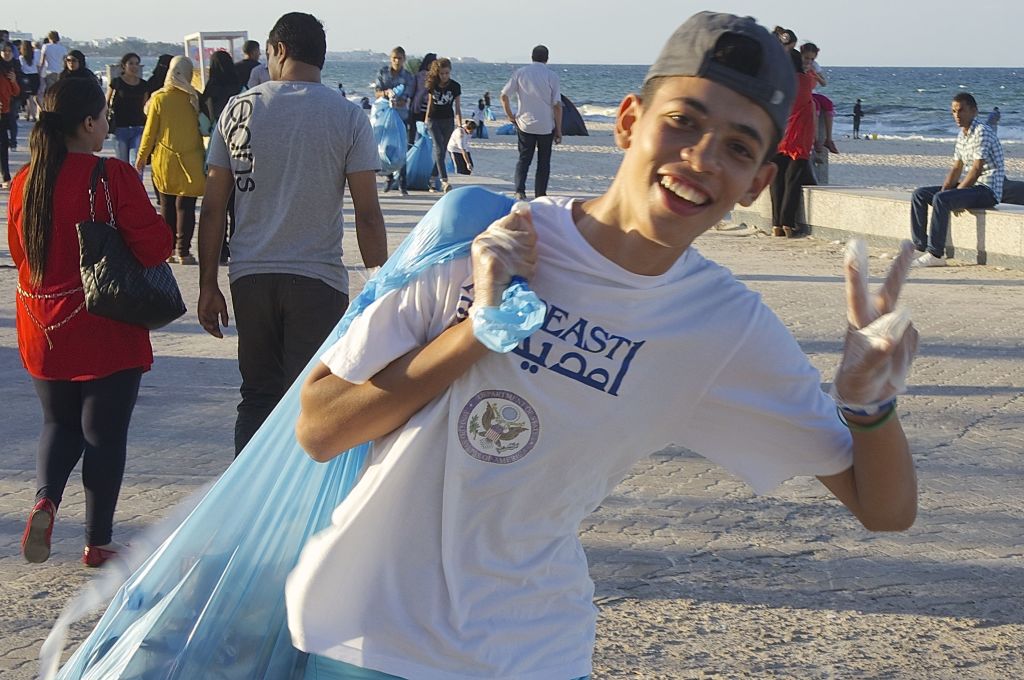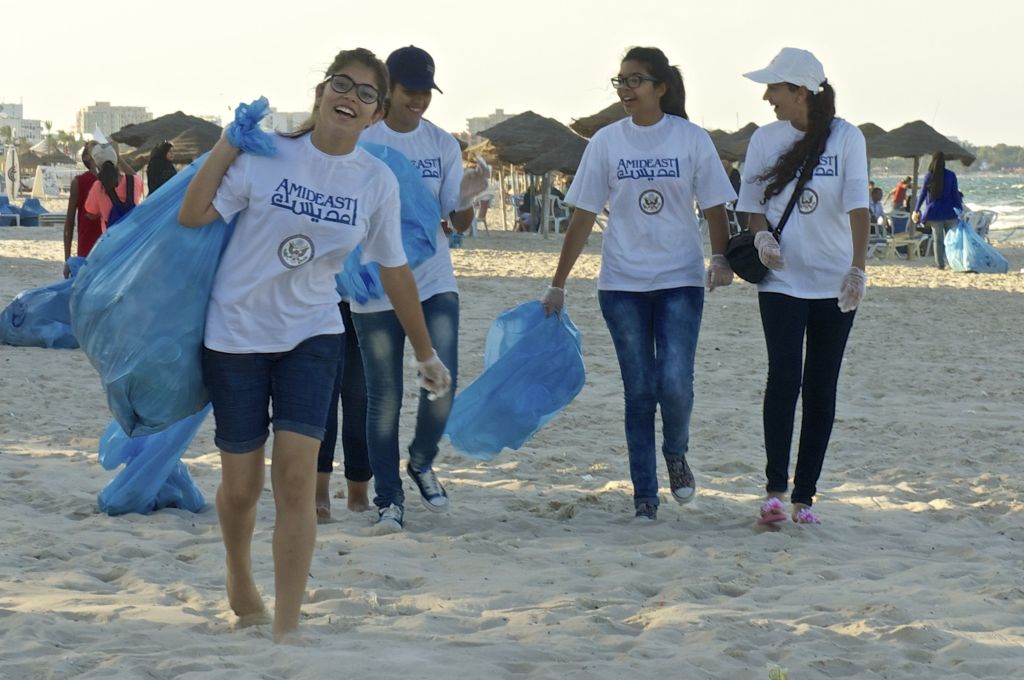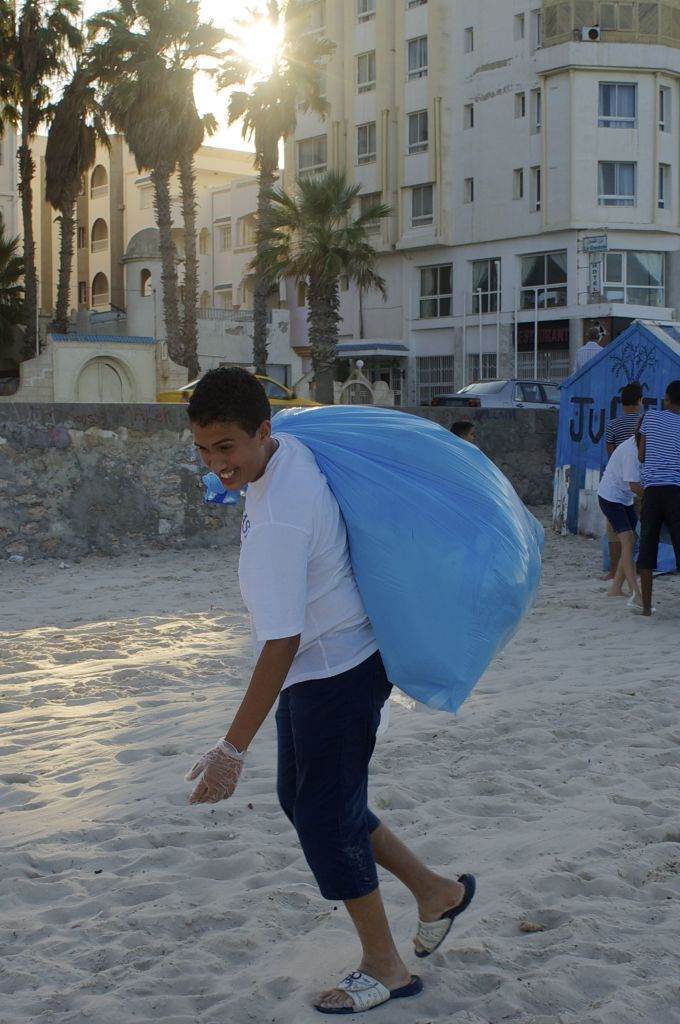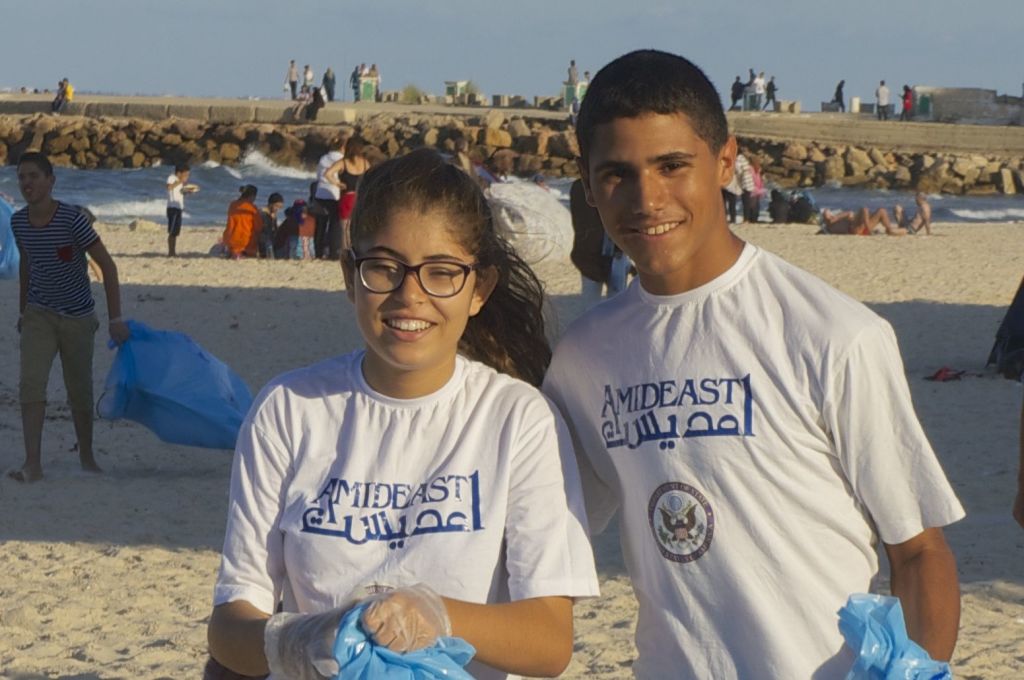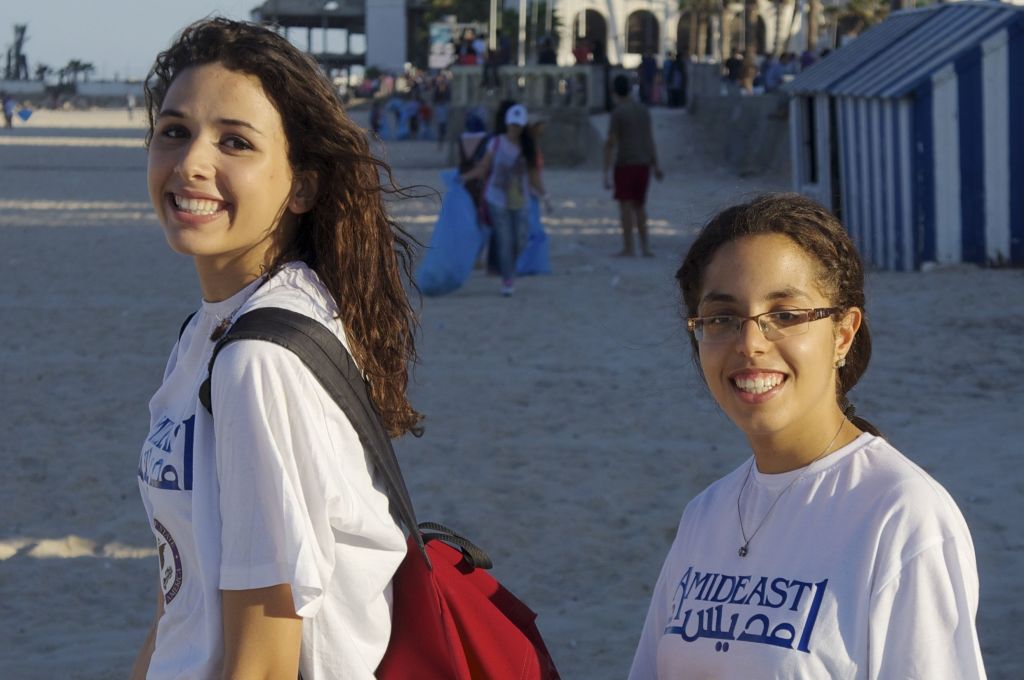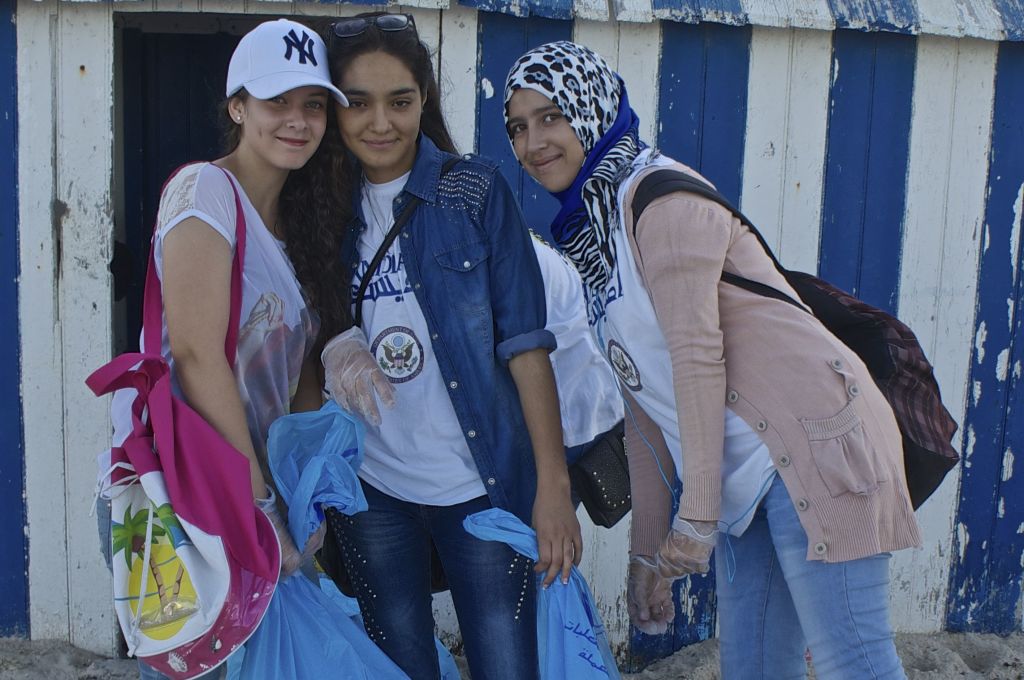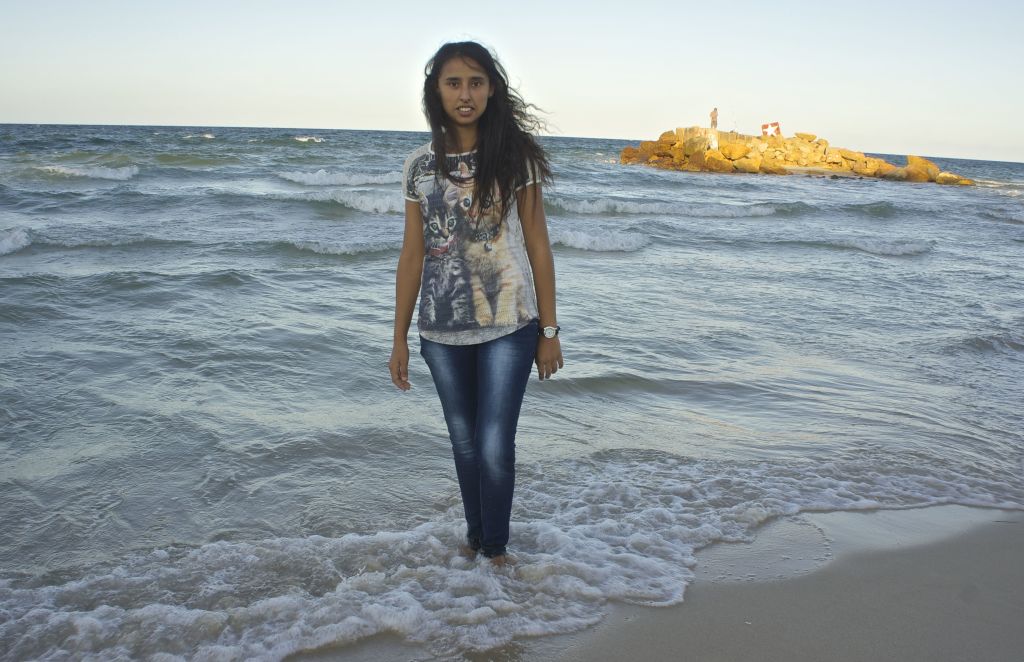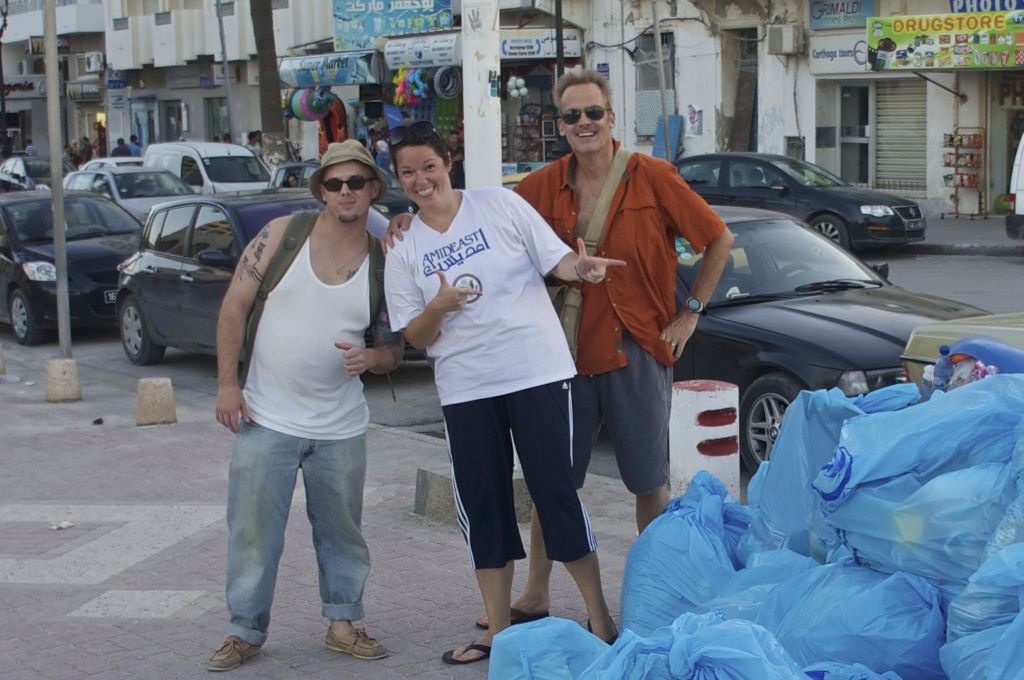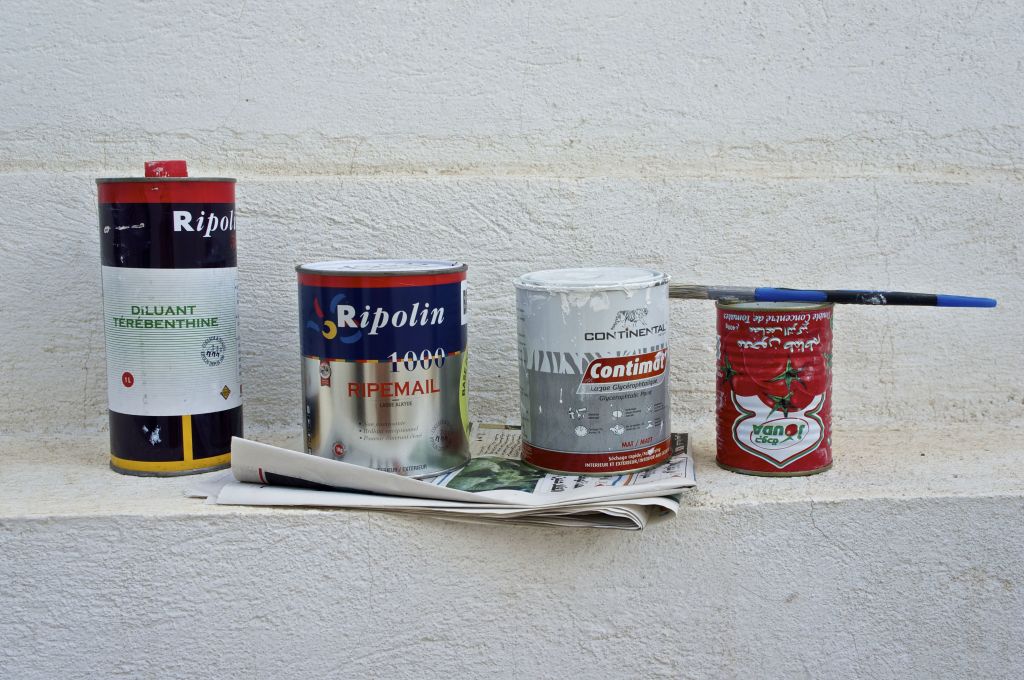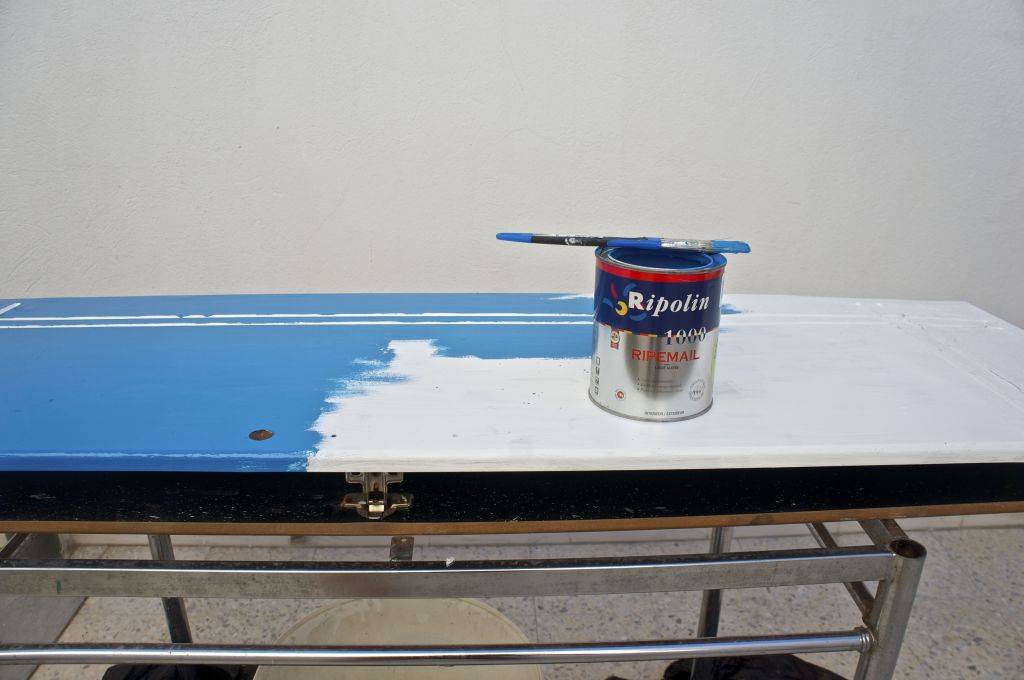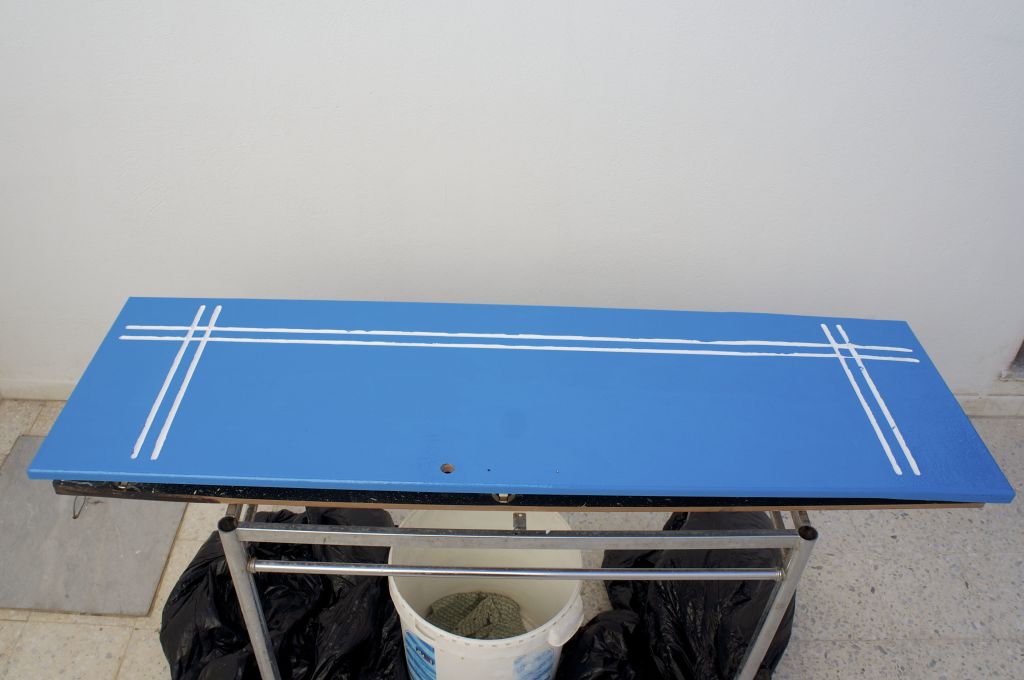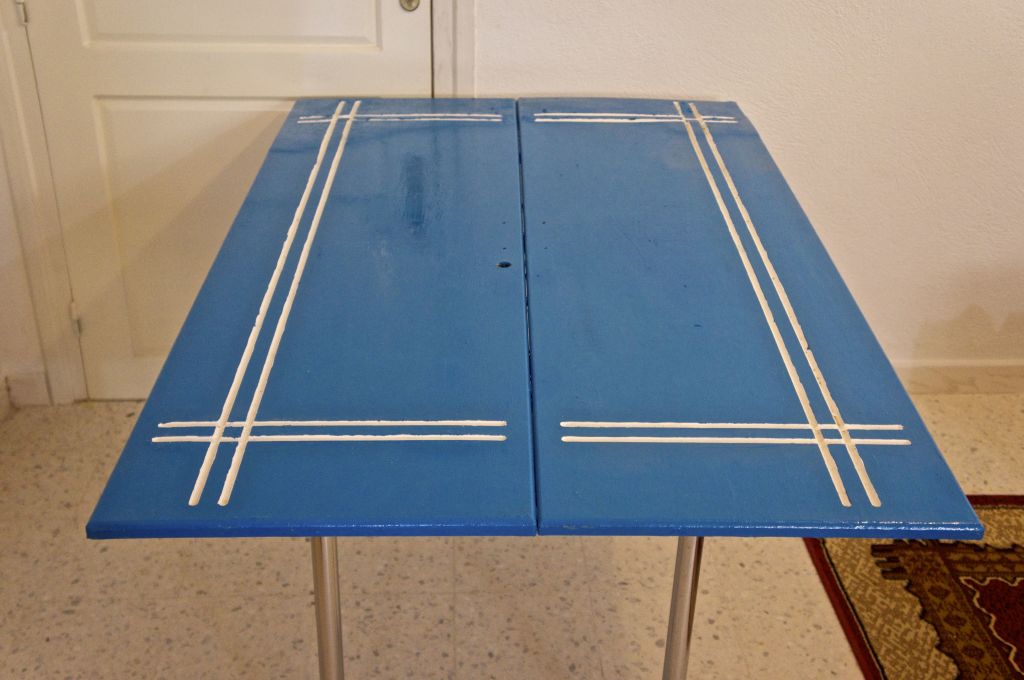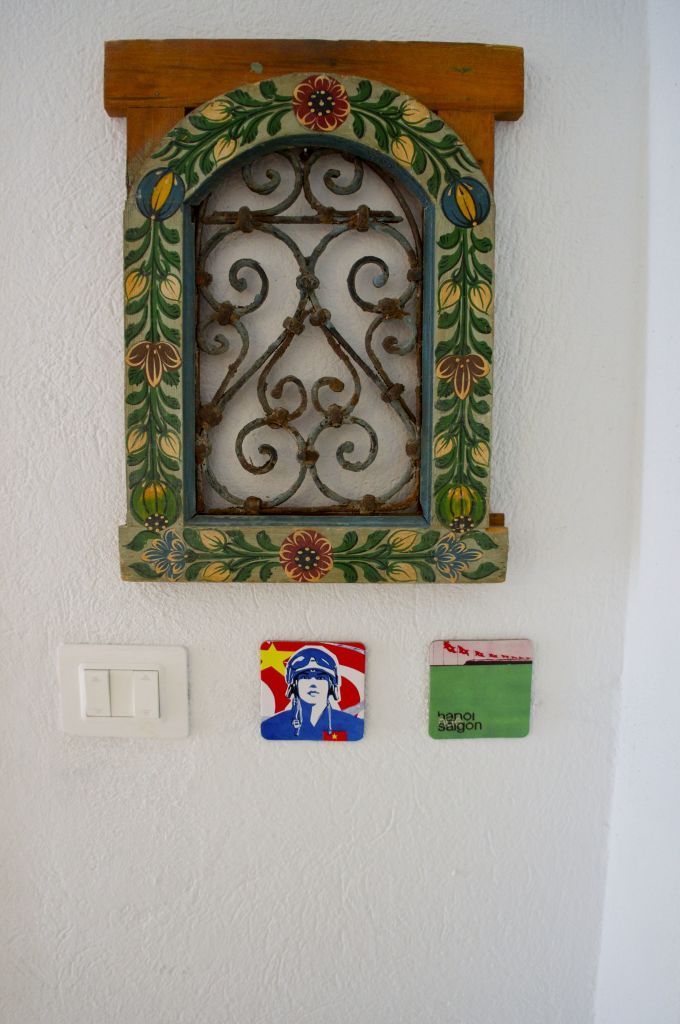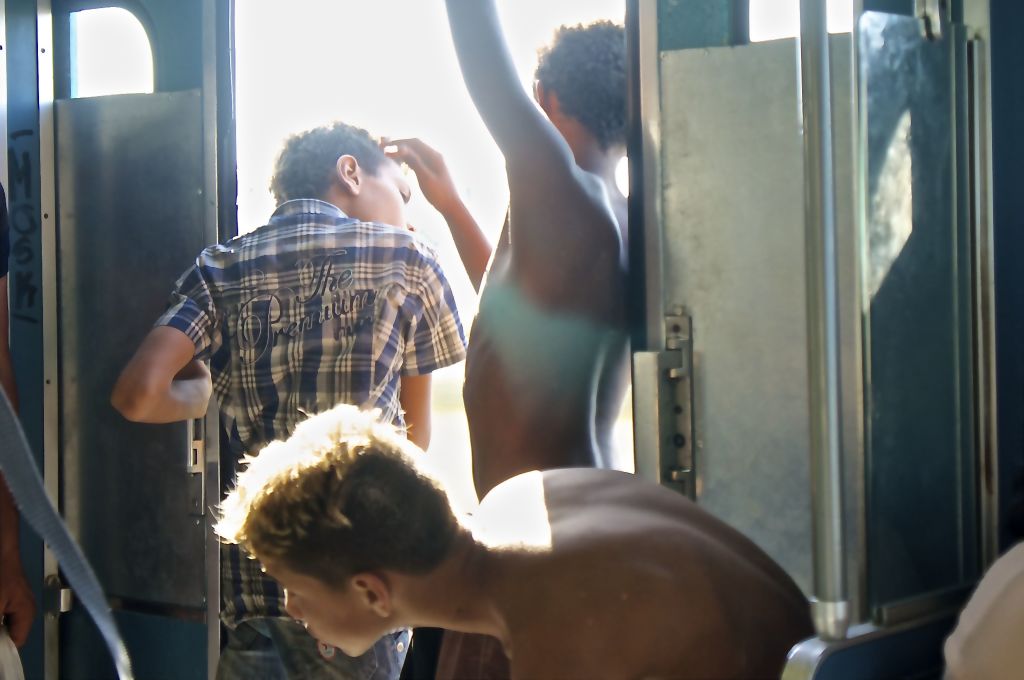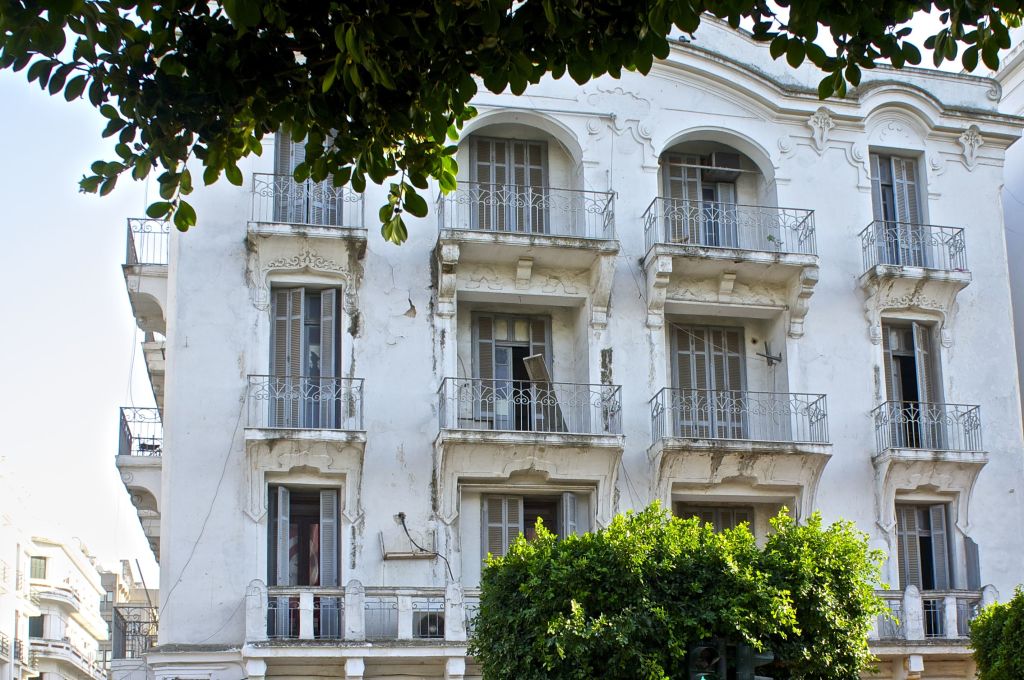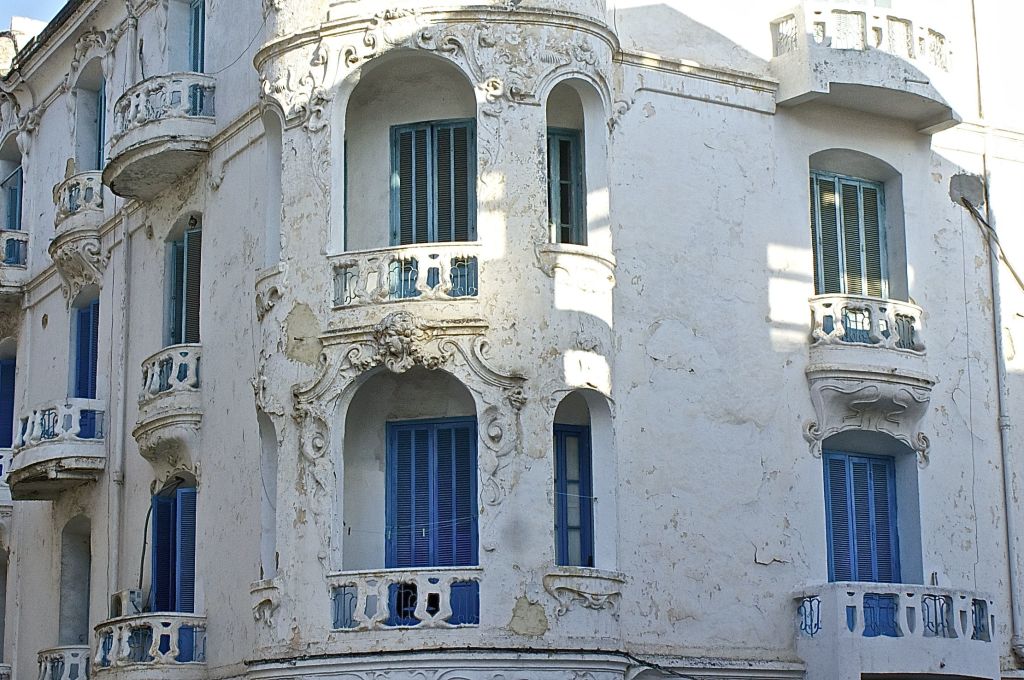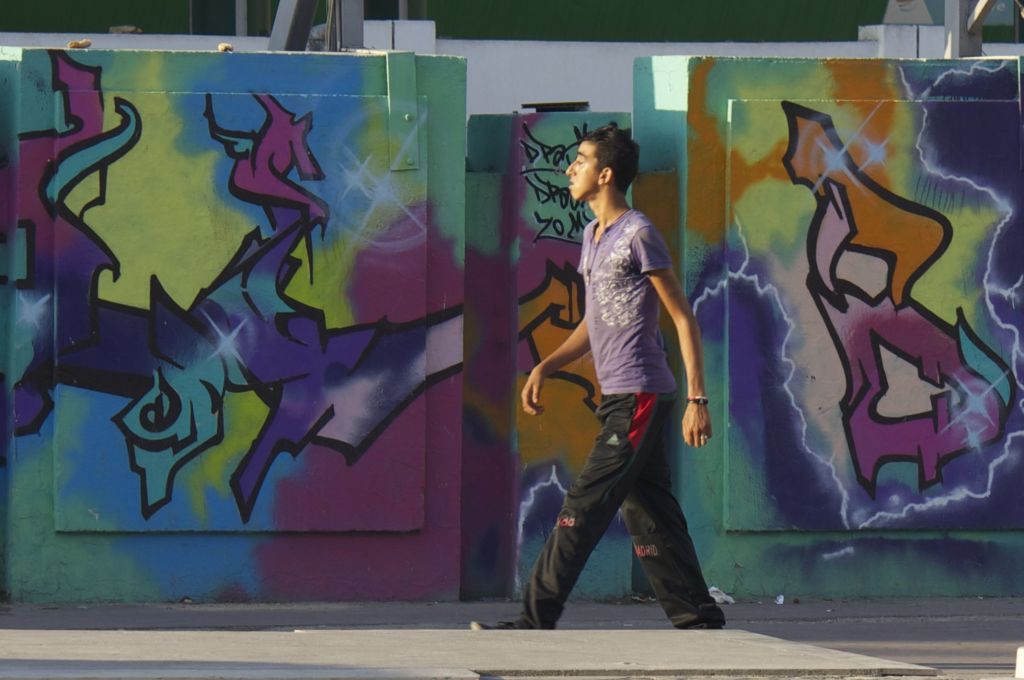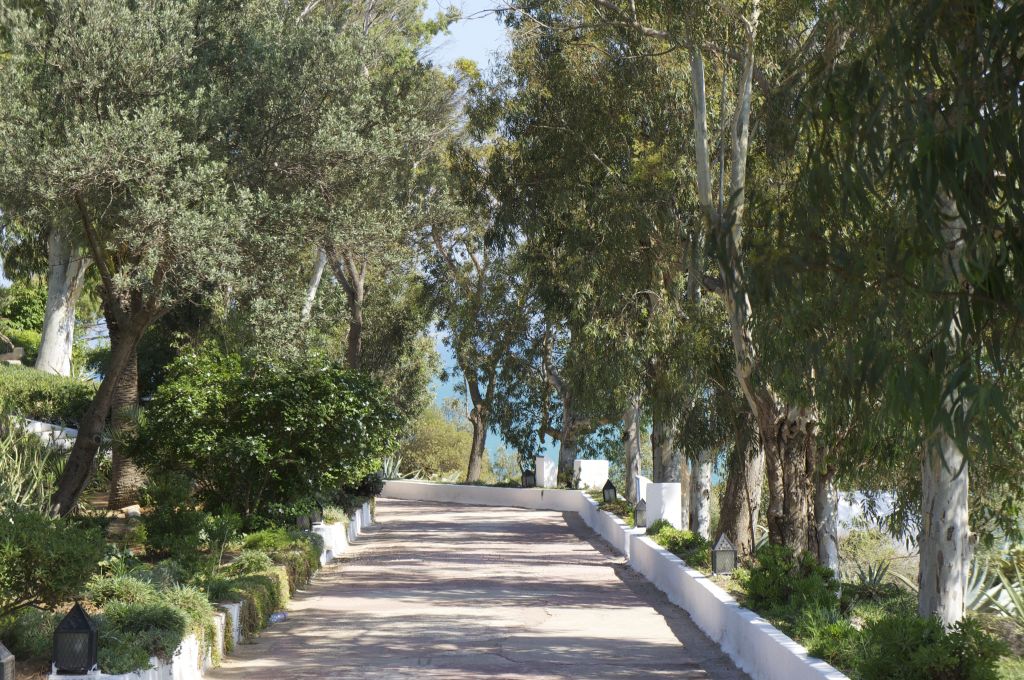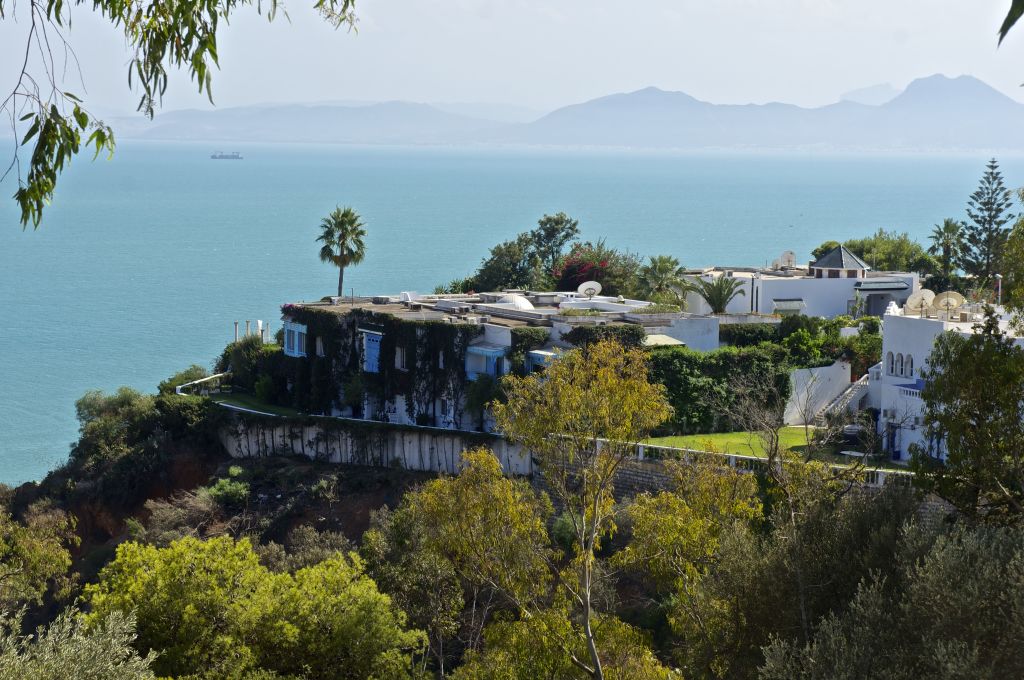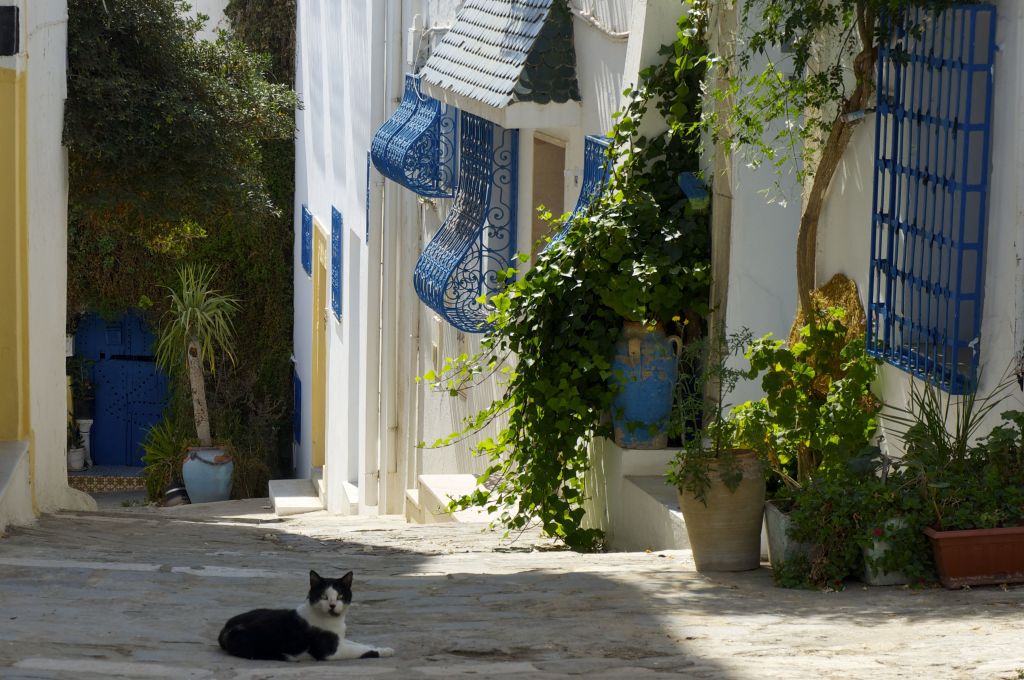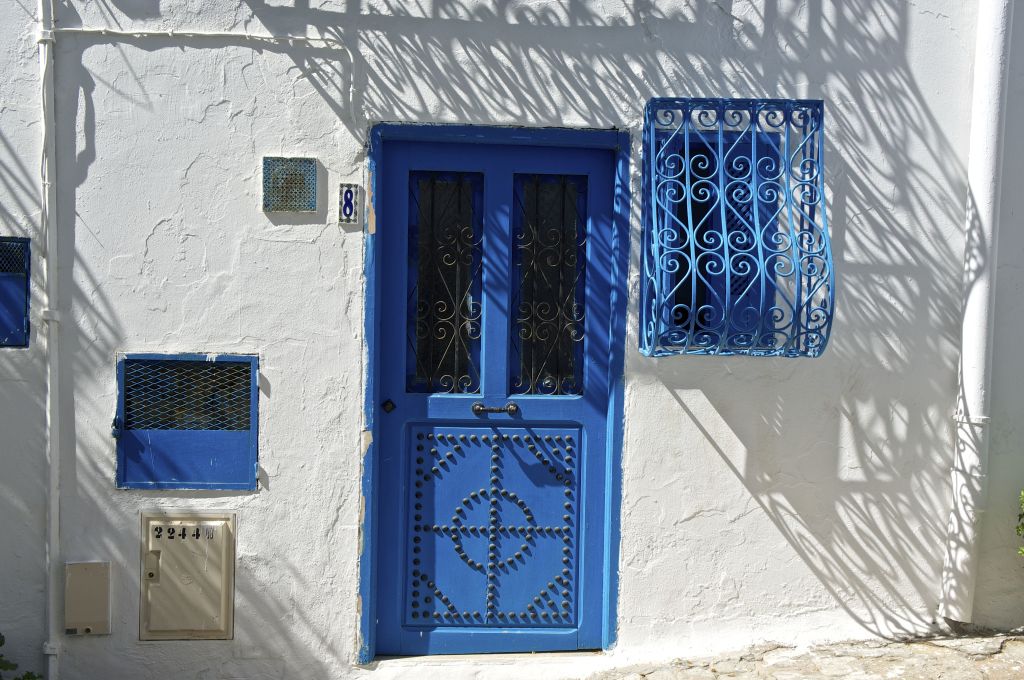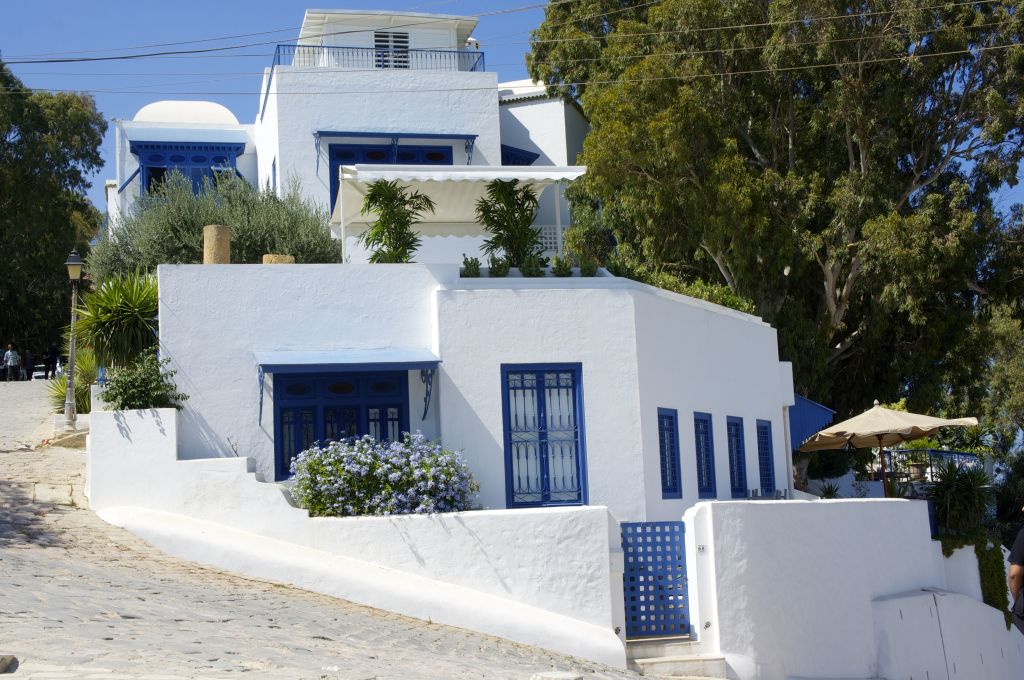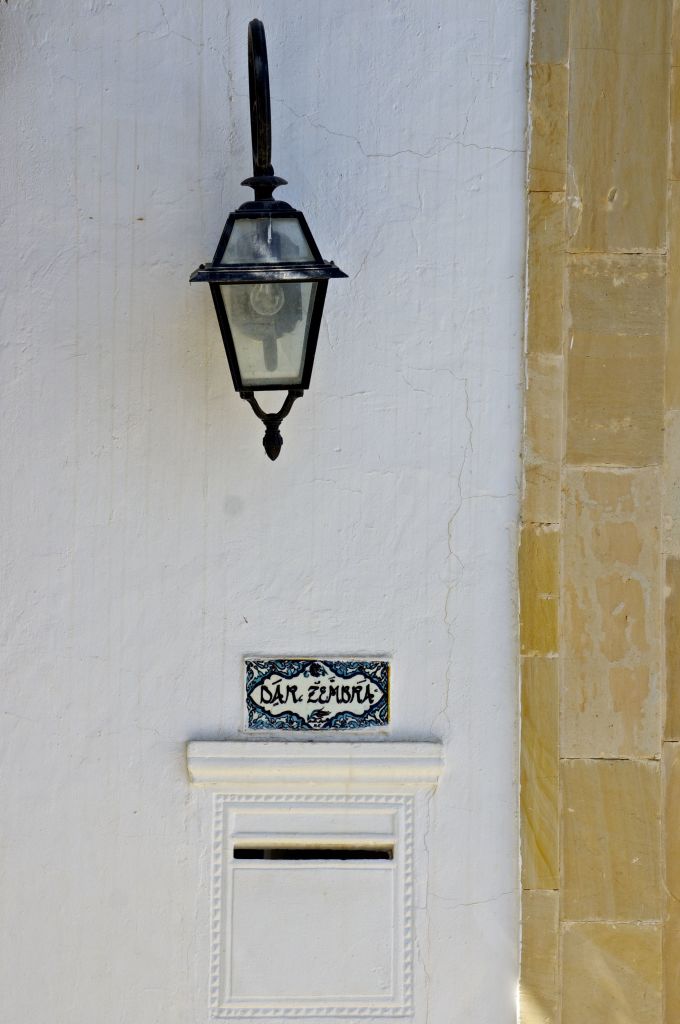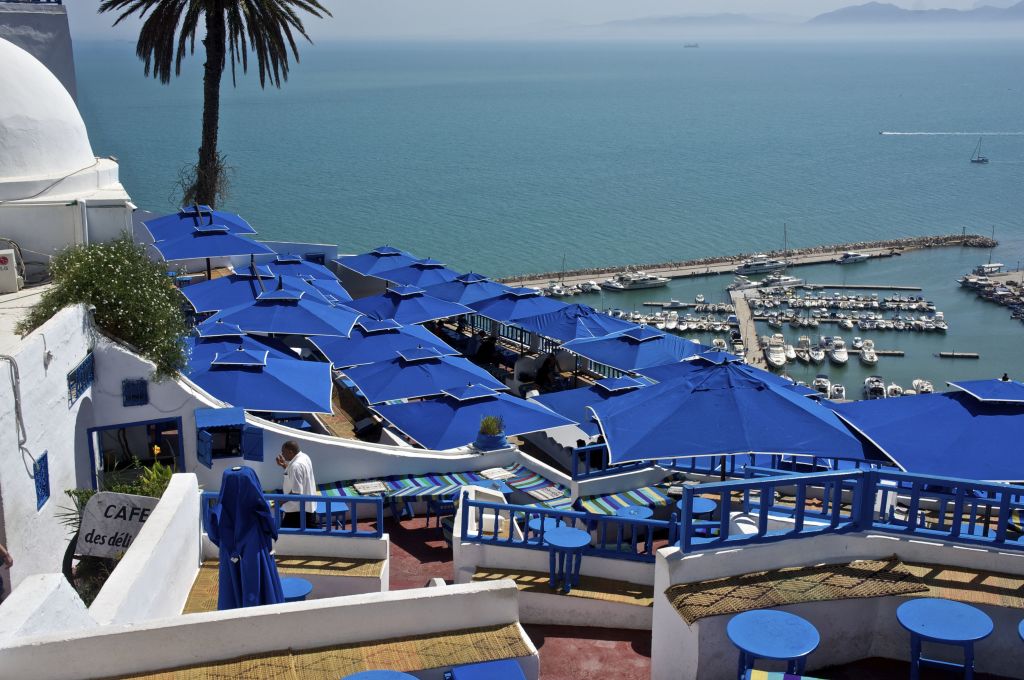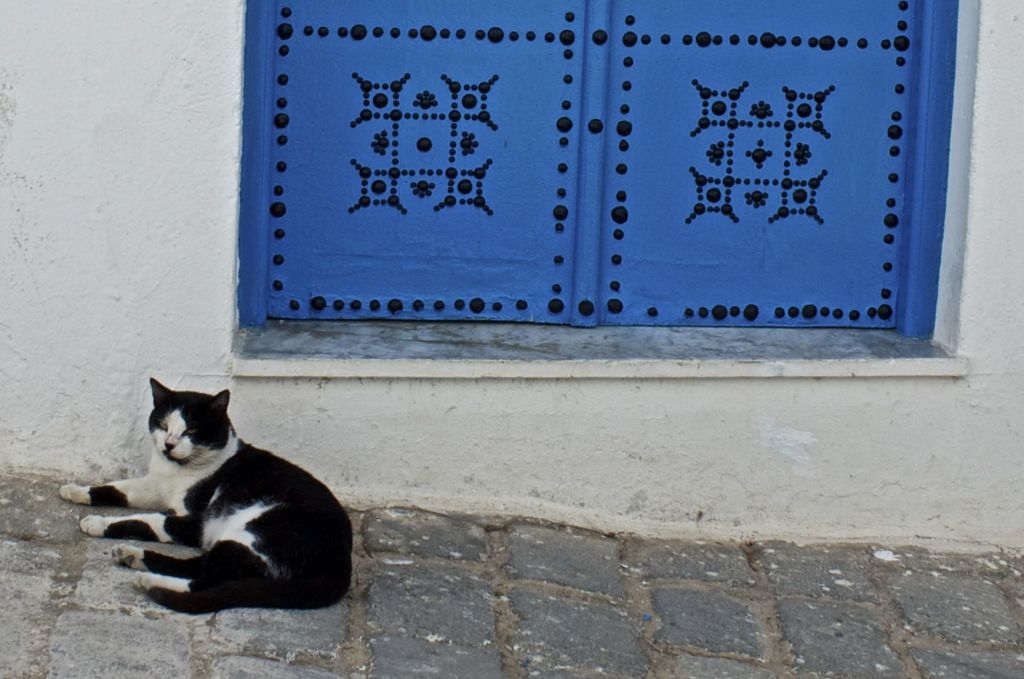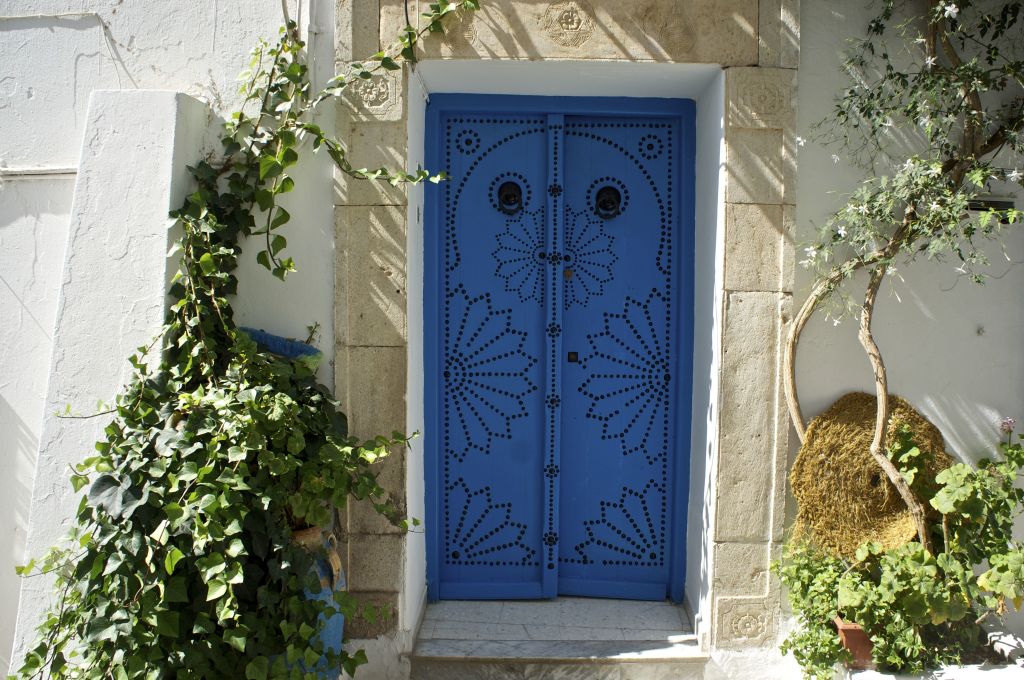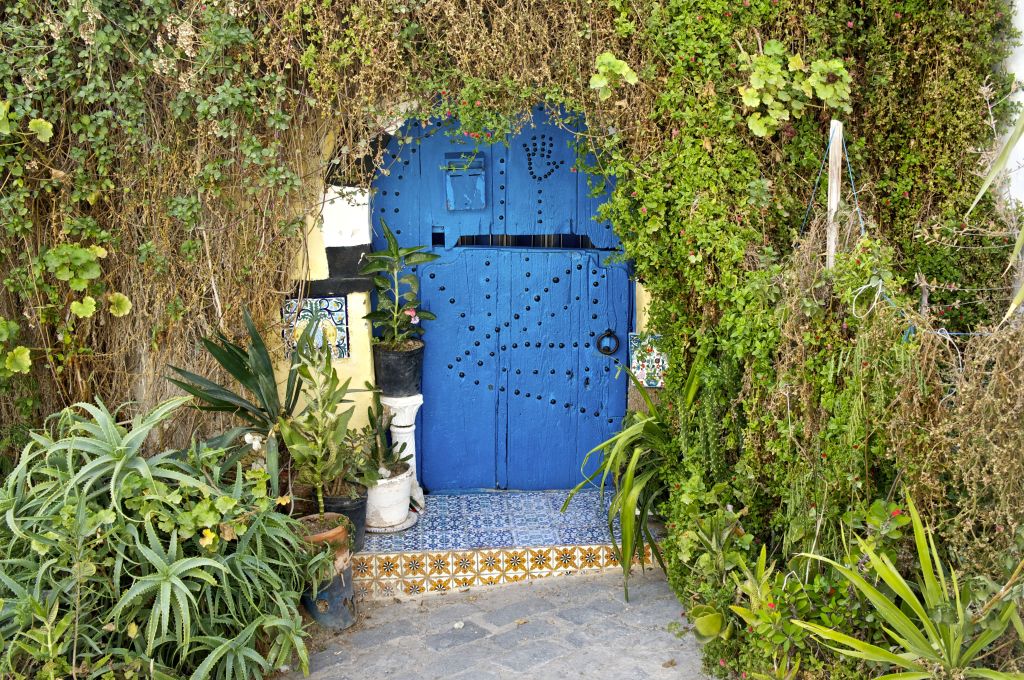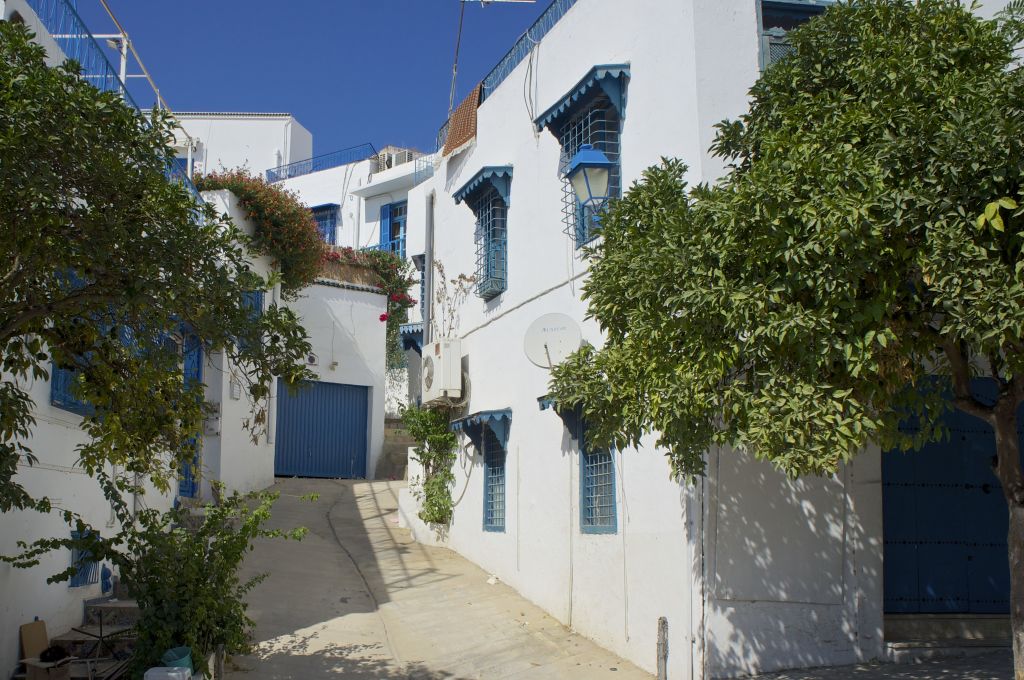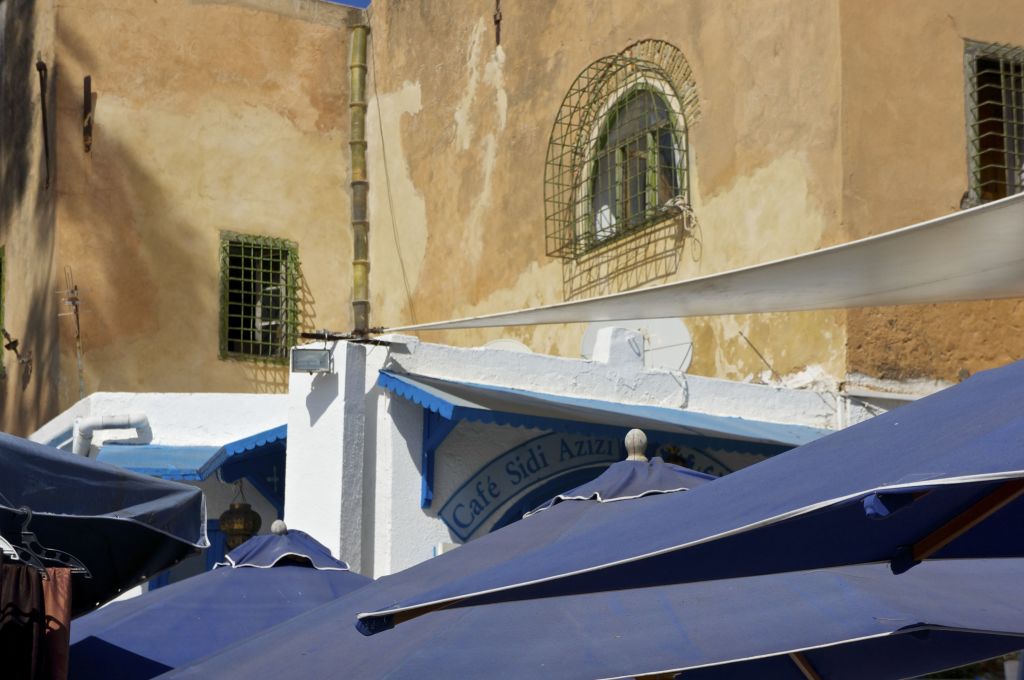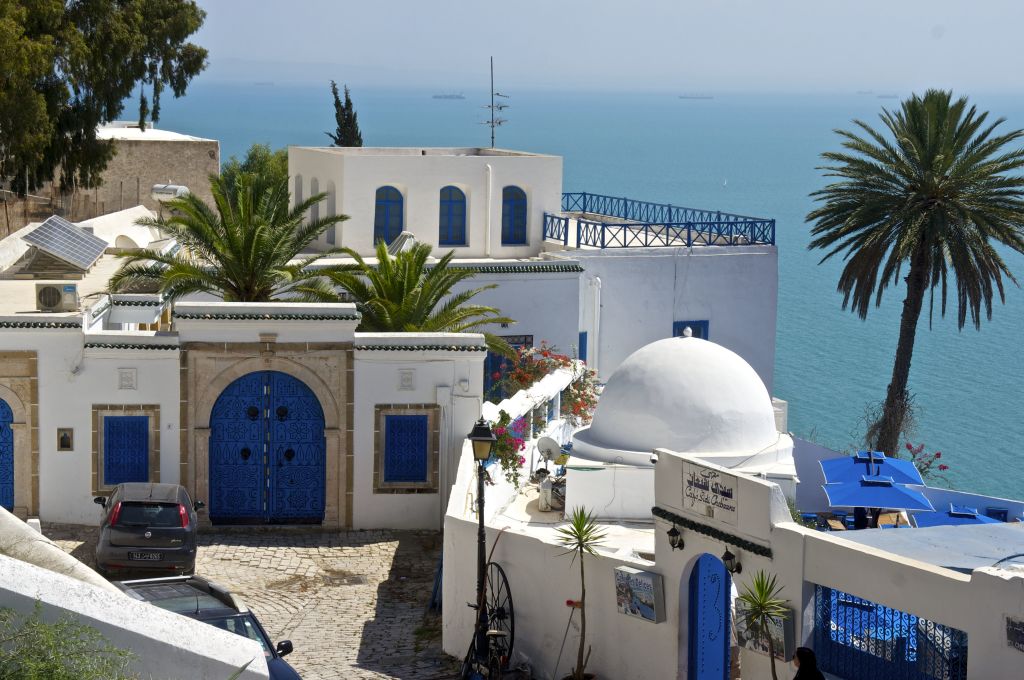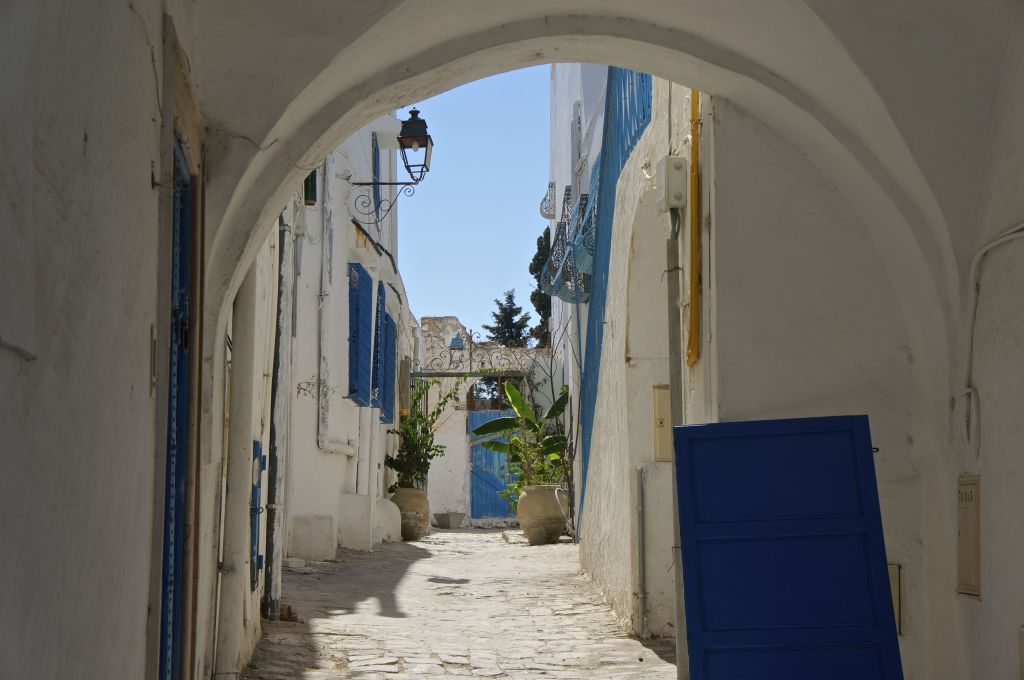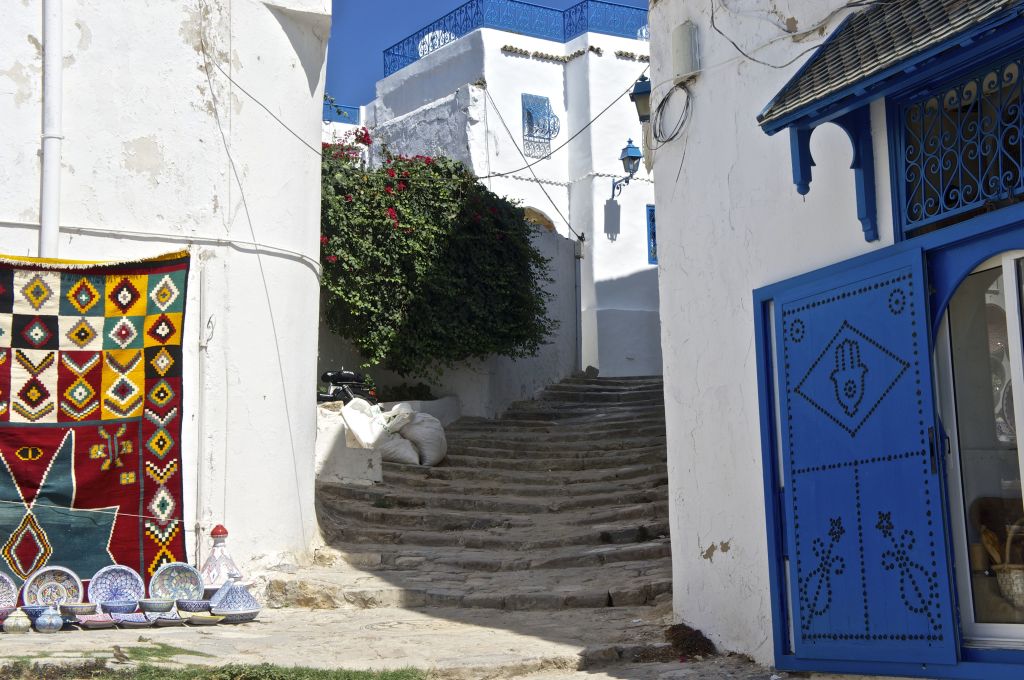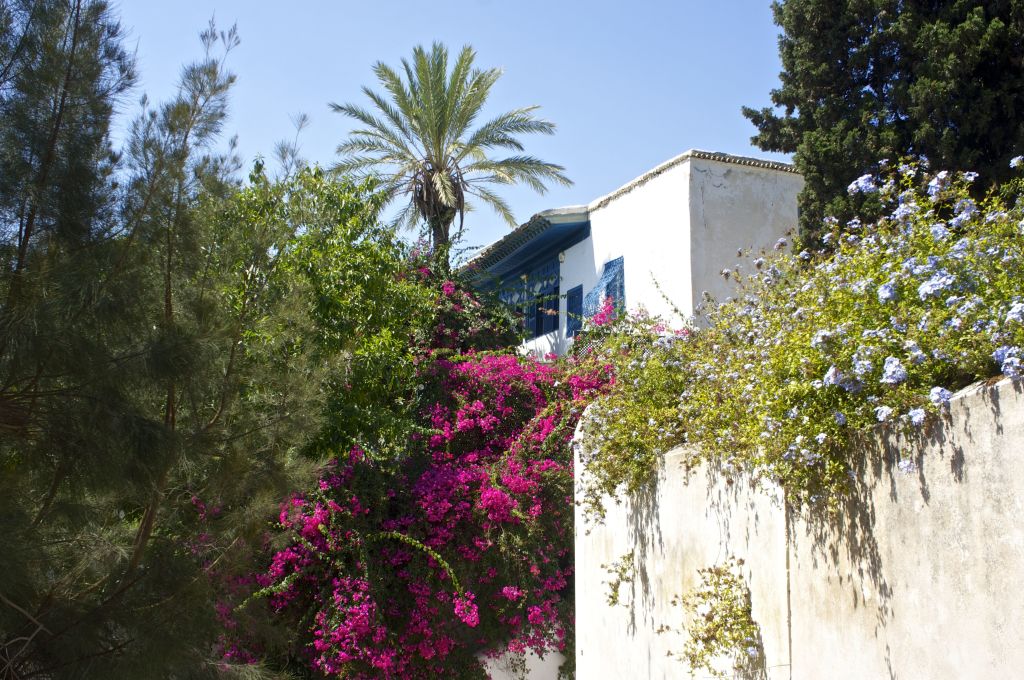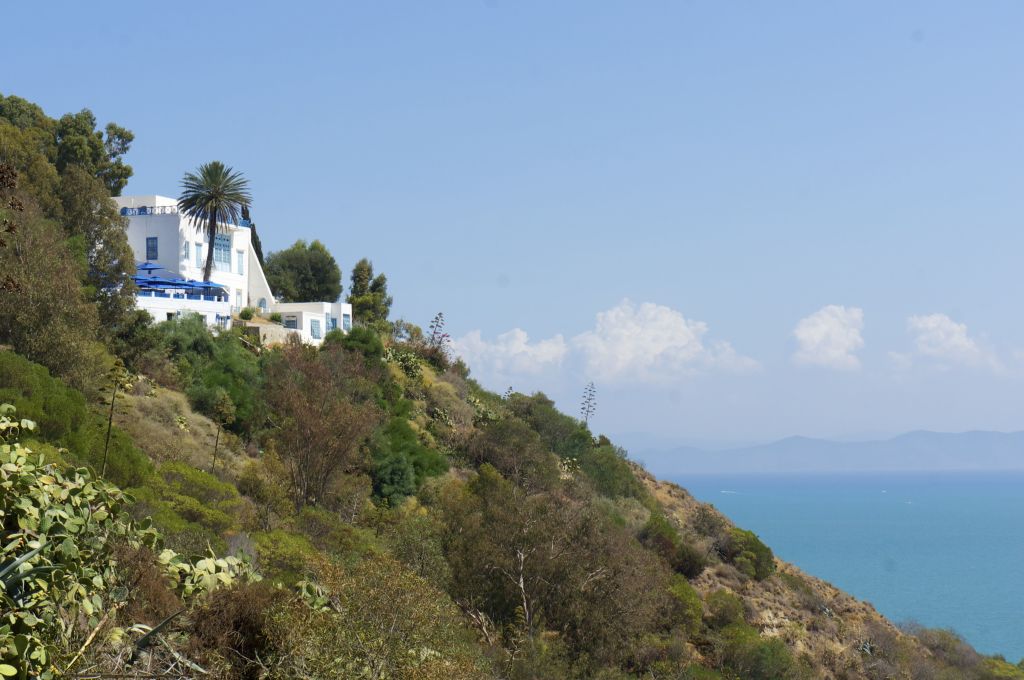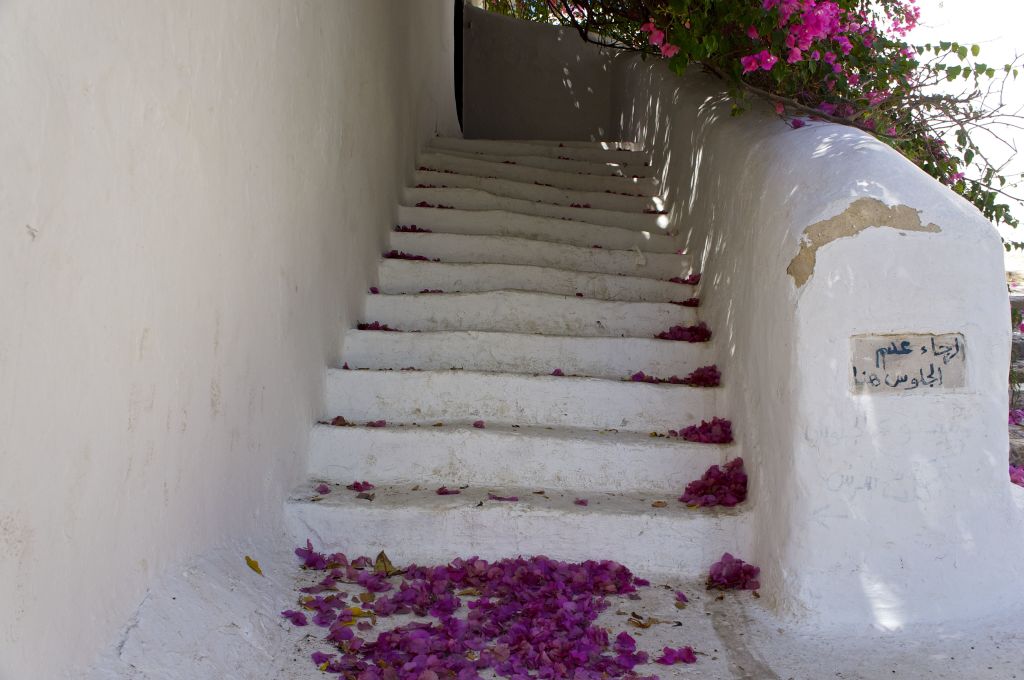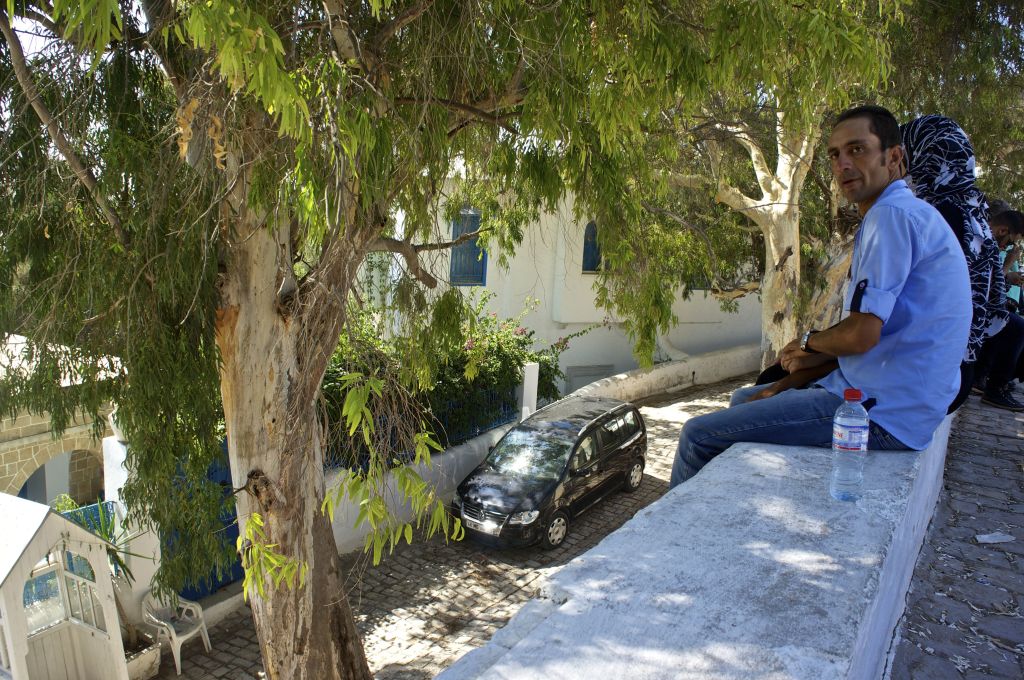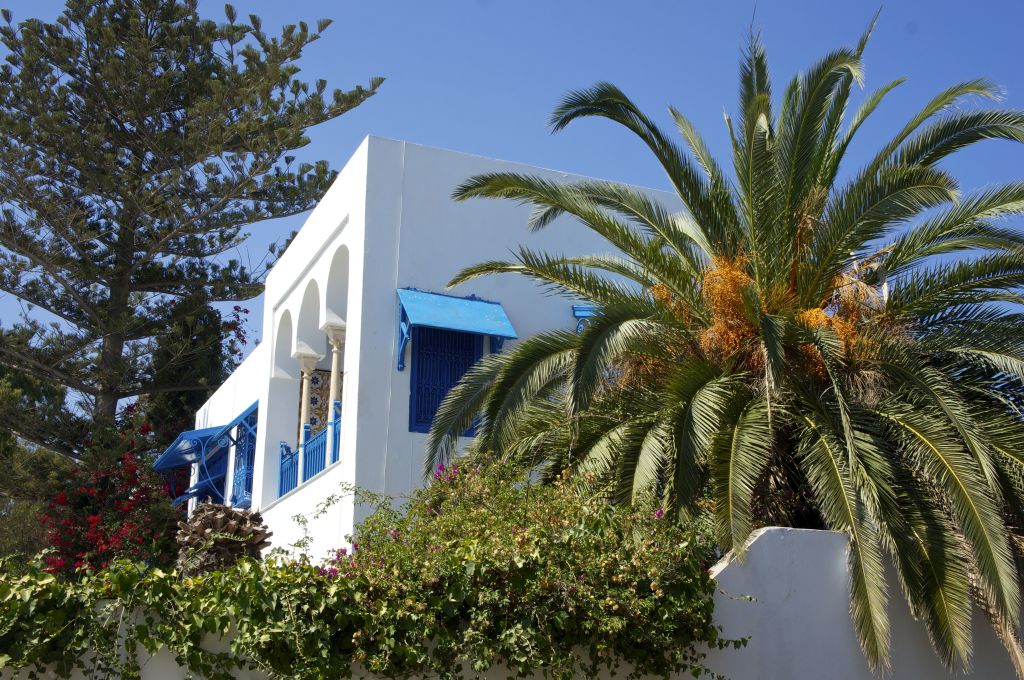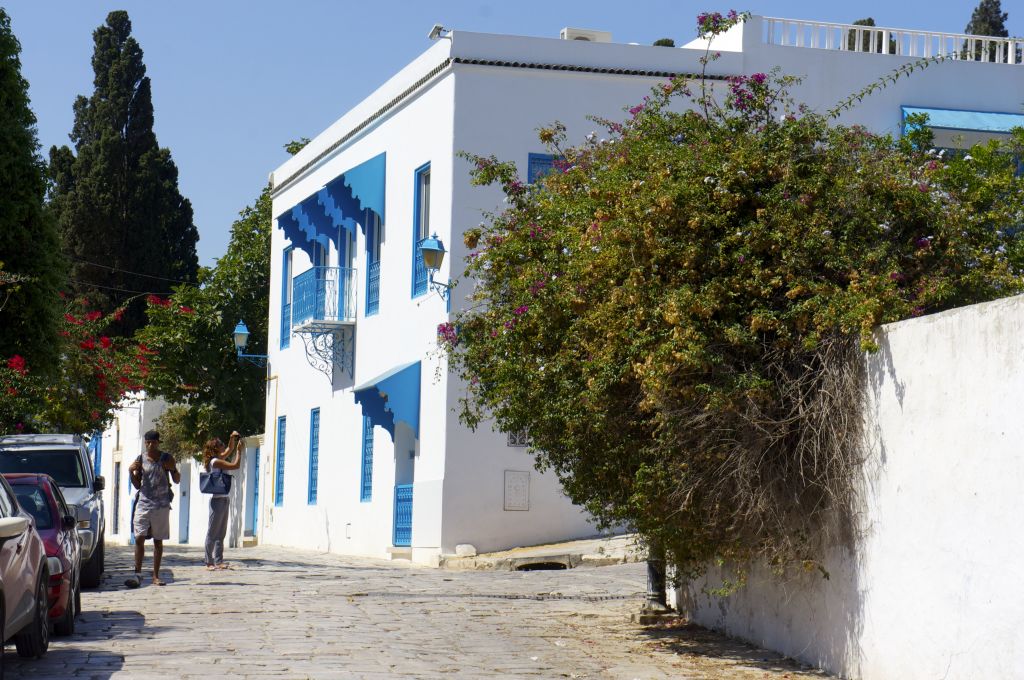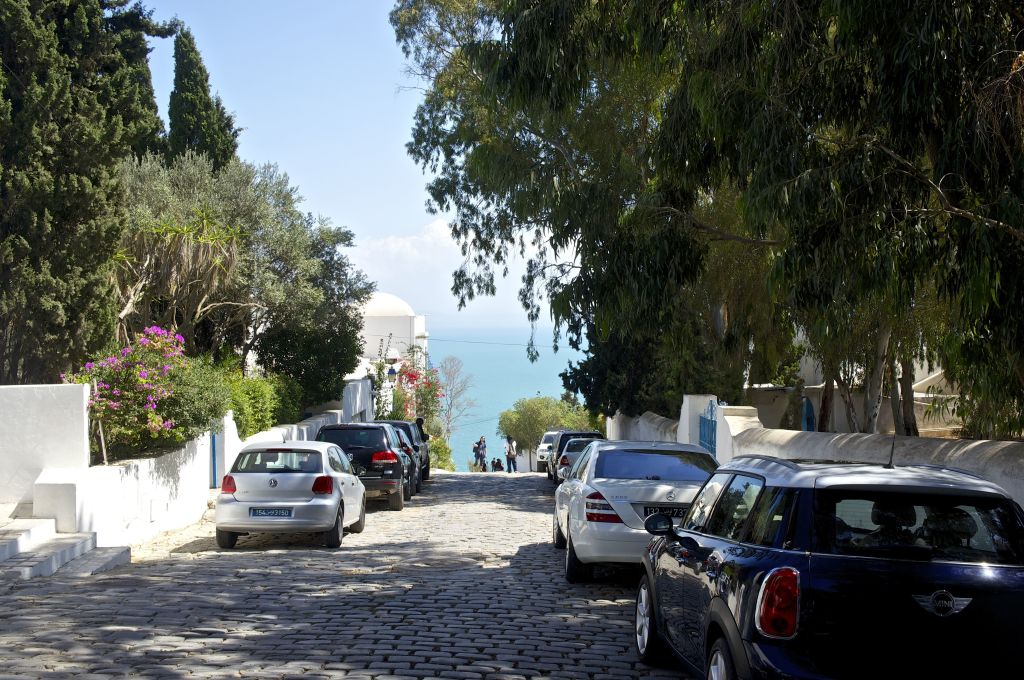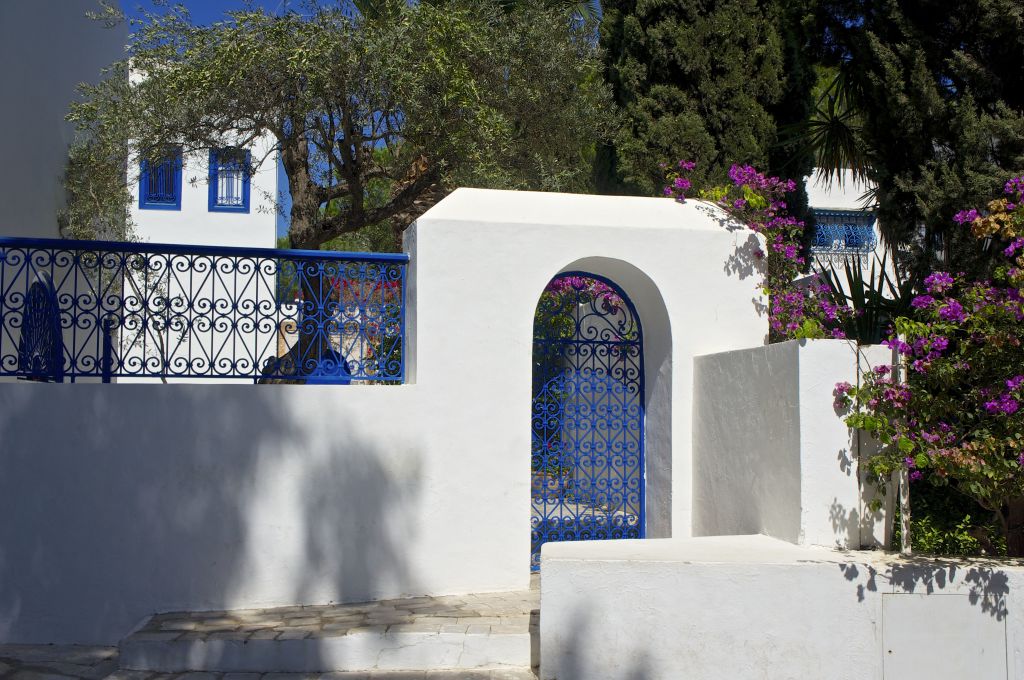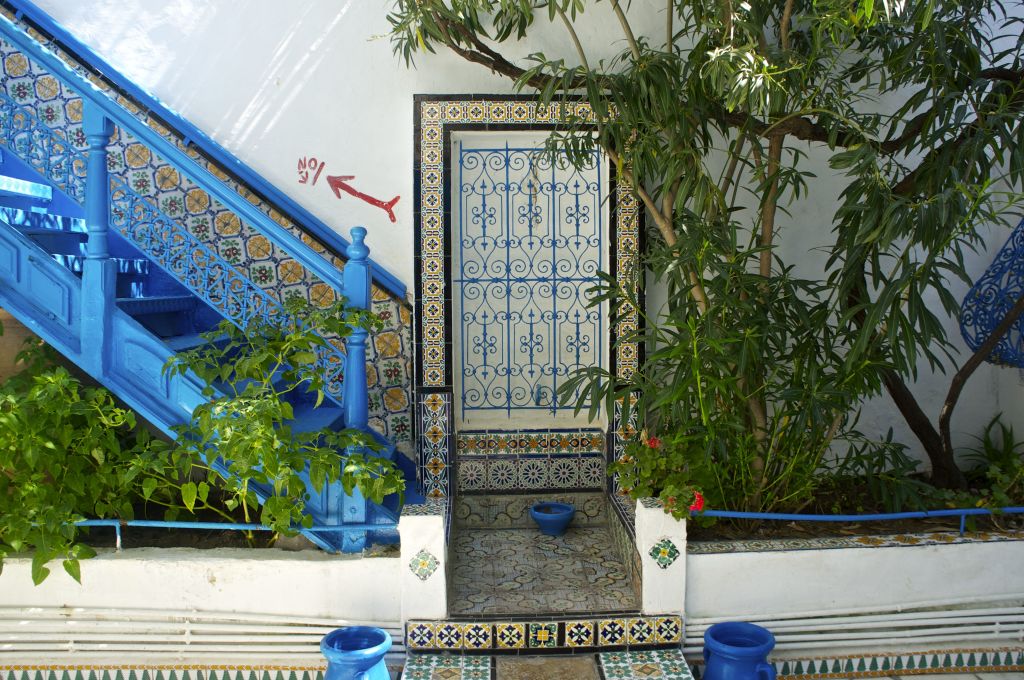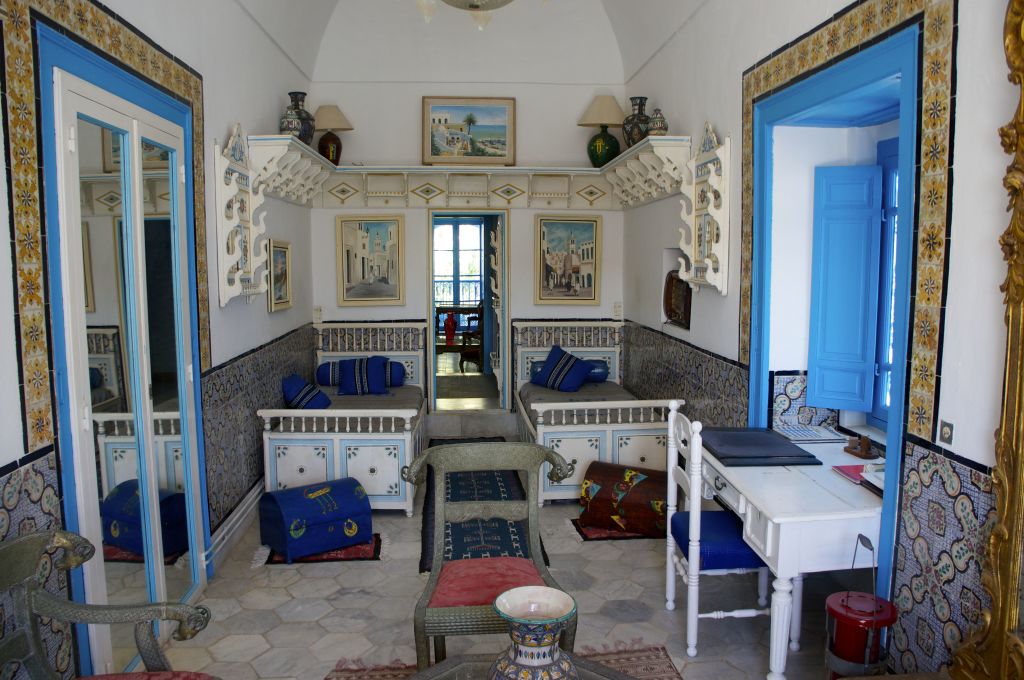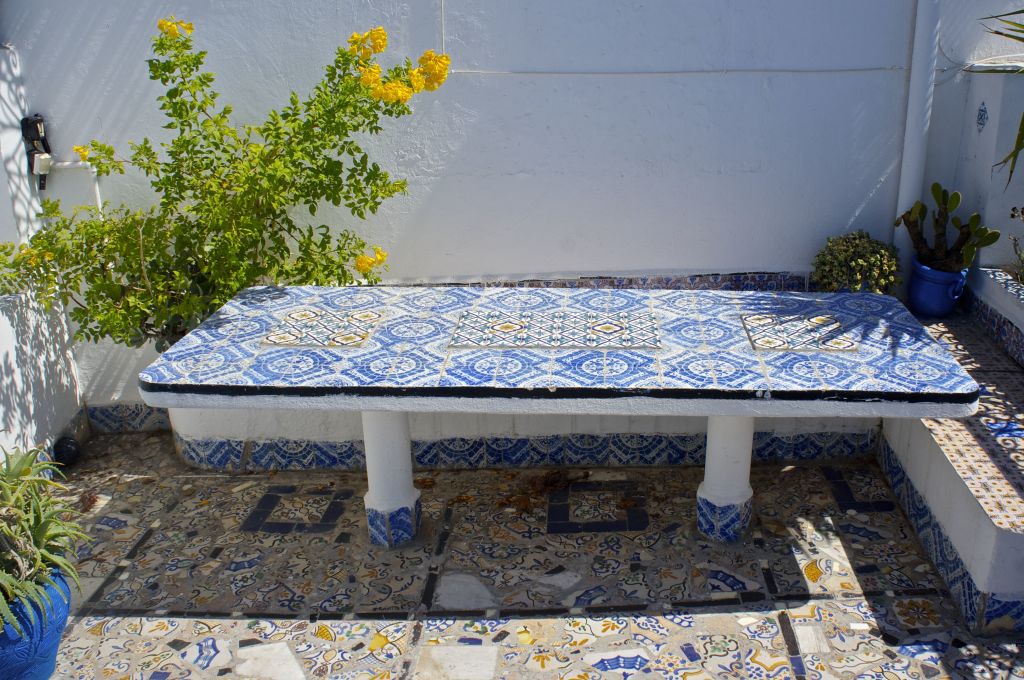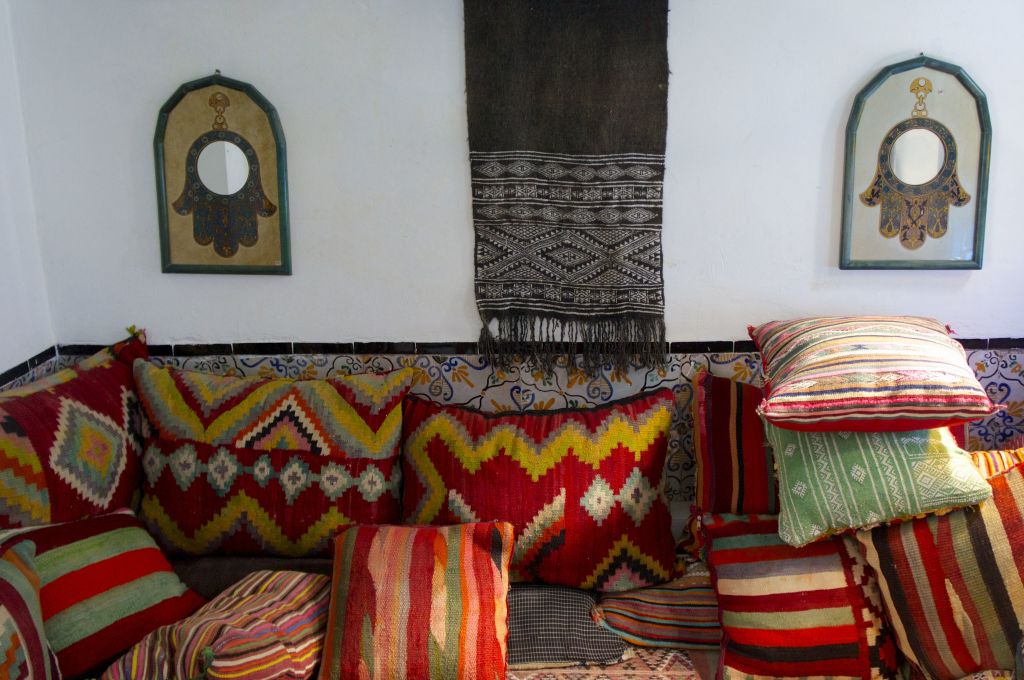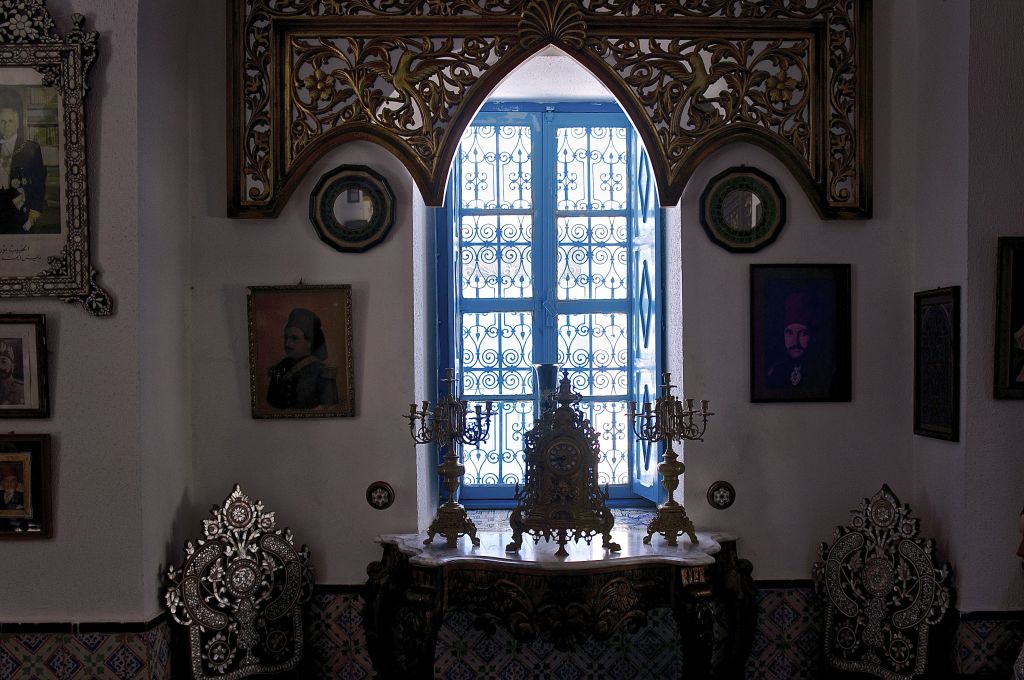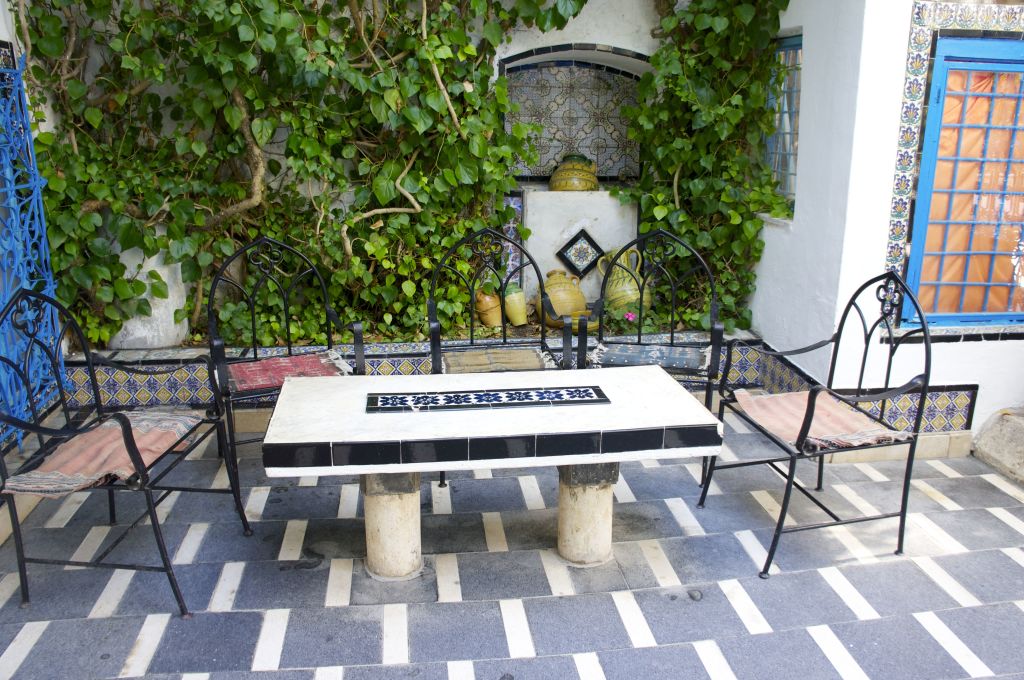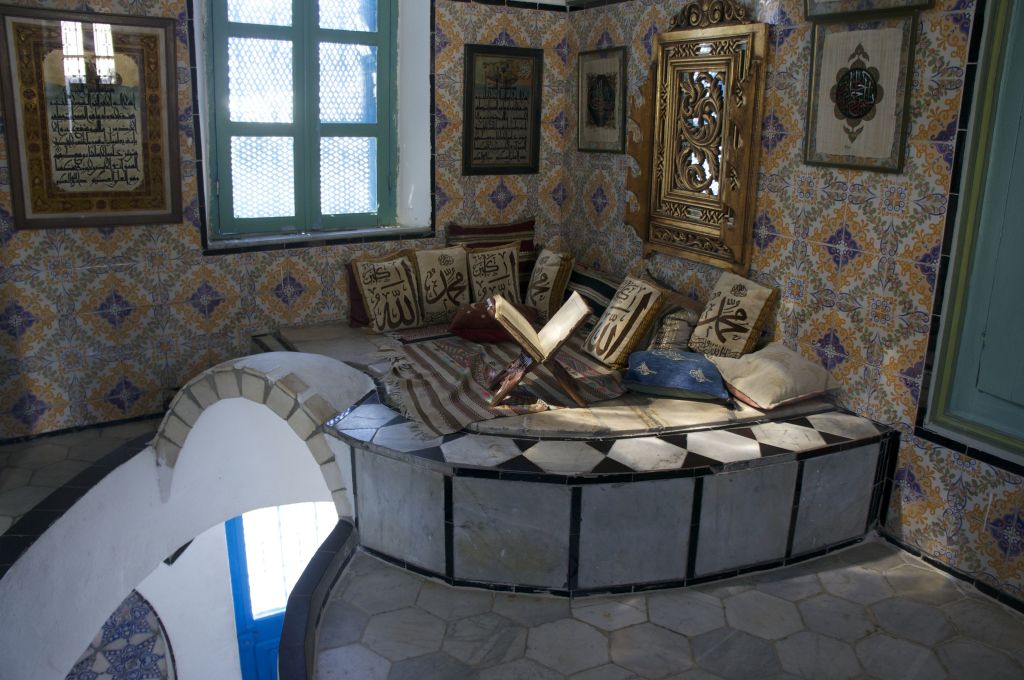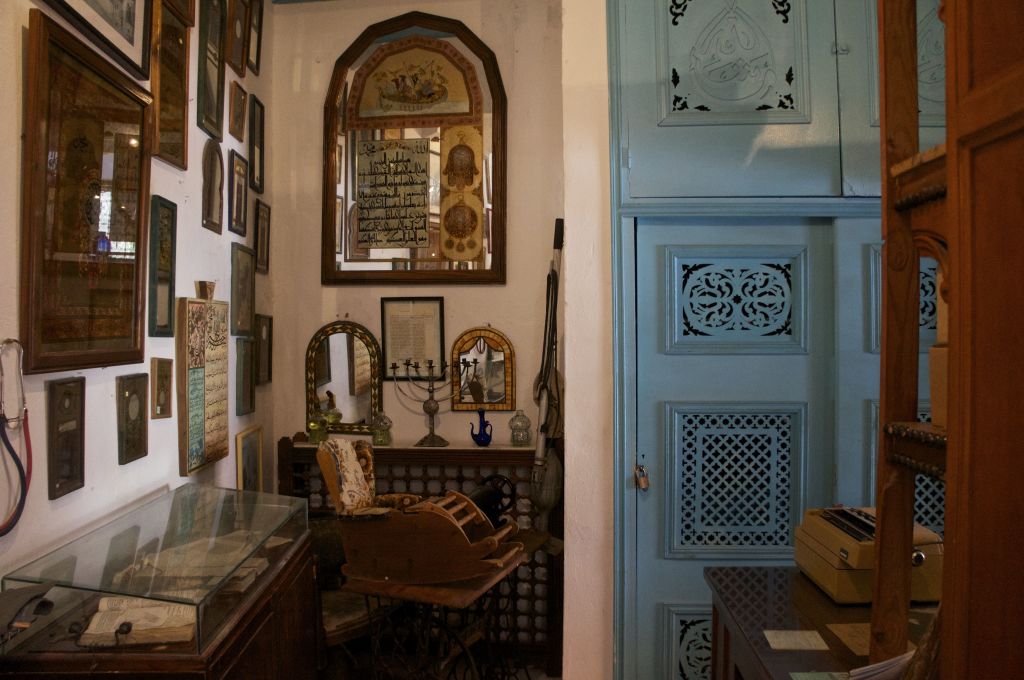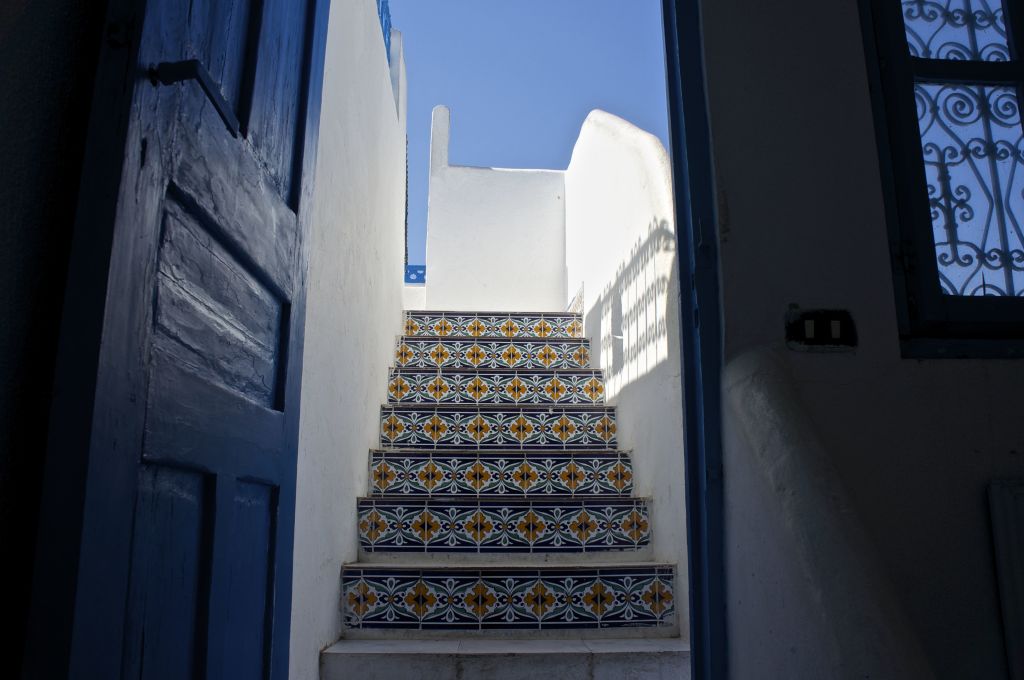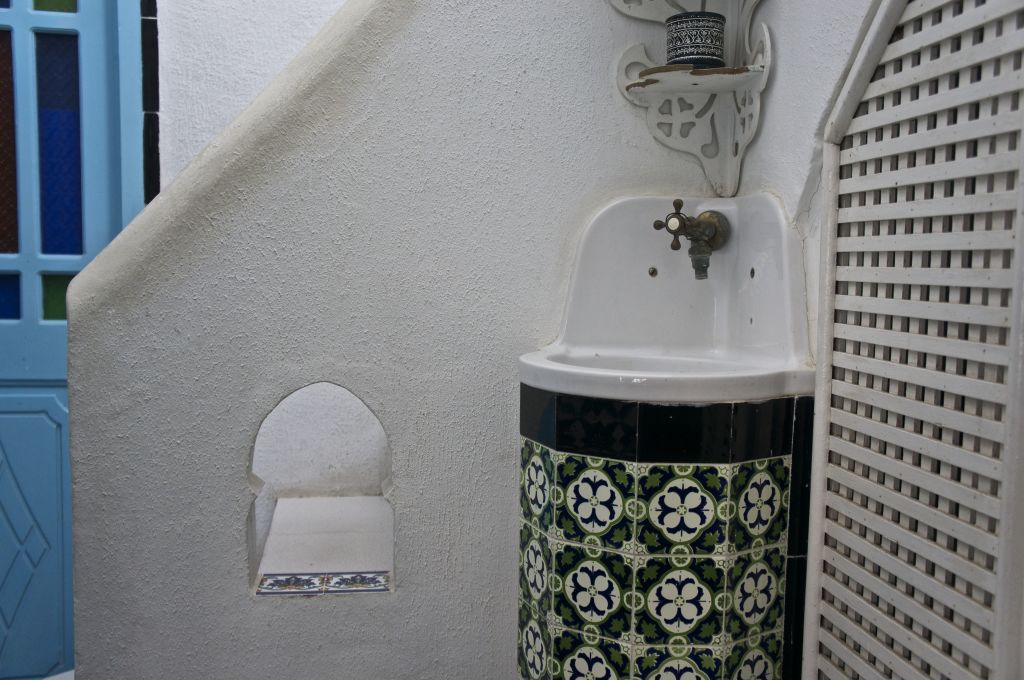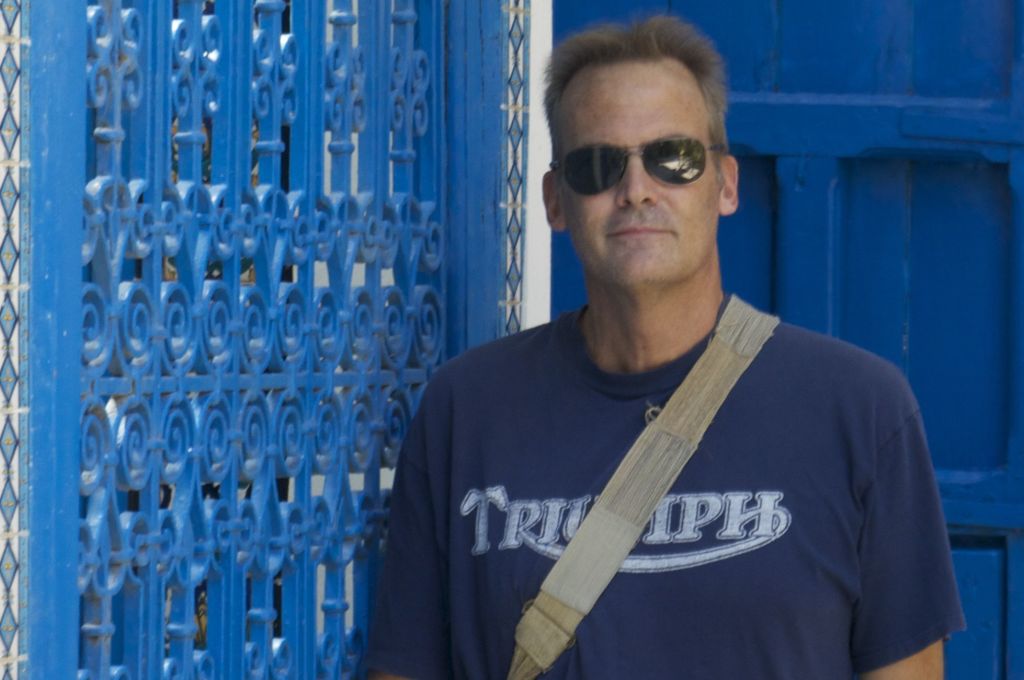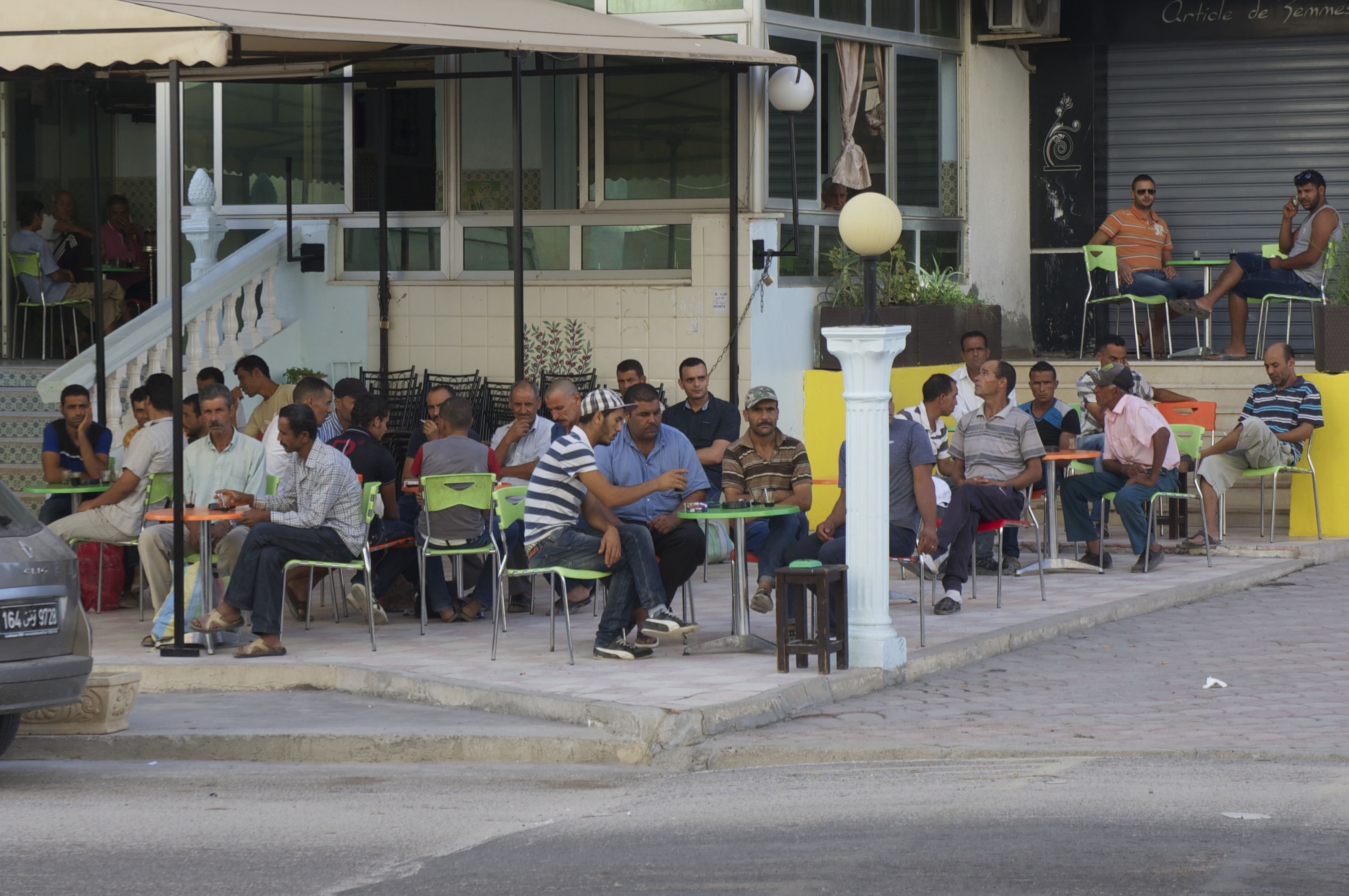On Friday, my Access class took the TOEFL Junior, a high-stress testing experience for all. And so on Saturday, we celebrated by doing a beach clean-up. Litter is a big problem in Sousse and community service projects are a component of the Access program, so it seemed like a perfect fit.
The other two Amideast teachers (Jenn and David) and I met up with our students in the late afternoon as the light was turning golden.
We passed out gloves and huge heavy-duty trash bags and the kids fanned out to pick up the garbage. While our students scrambled to be part of the class that picked up the most trash, several Sousse residents came over to ask us where we were from and to express their gratitude for our project. One man said he had seen some British tourists at the beach earlier that day taking pictures of the garbage that litters the beach and he had wanted to cry. Seeing us, he said, made him feel hopeful again.
However, not everyone was so supportive. One of our students was hit in the face by another kid just for the hell of it, maybe because he thought picking up trash was for dorks. There was a motorcycle policeman nearby who gave chase to the assailant. Just as the student who’d been struck was finished telling us the story, the cop pulled up with the miscreant on the back of his motorcycle. He made the kid who’d hit our student apologize to him and kiss him on the cheeks: street justice, Tunisian style.
It was a fun day. All in all, our forty students collected over 80 bags of trash.
And my class won the trash competition, the prize being a trip to an ice-cream spot two weeks from now. But when we saw how disappointed the other students were, we decided that even though ice cream for all was not technically in the budget, we will reach into our own pockets and fund an ice cream celebration for all Access students. They were all enthusiastic and did a terrific (and much-needed) job.

